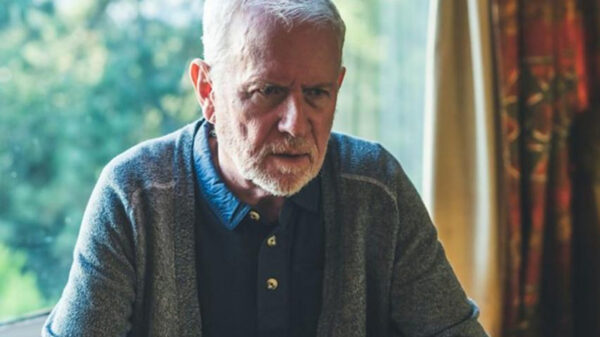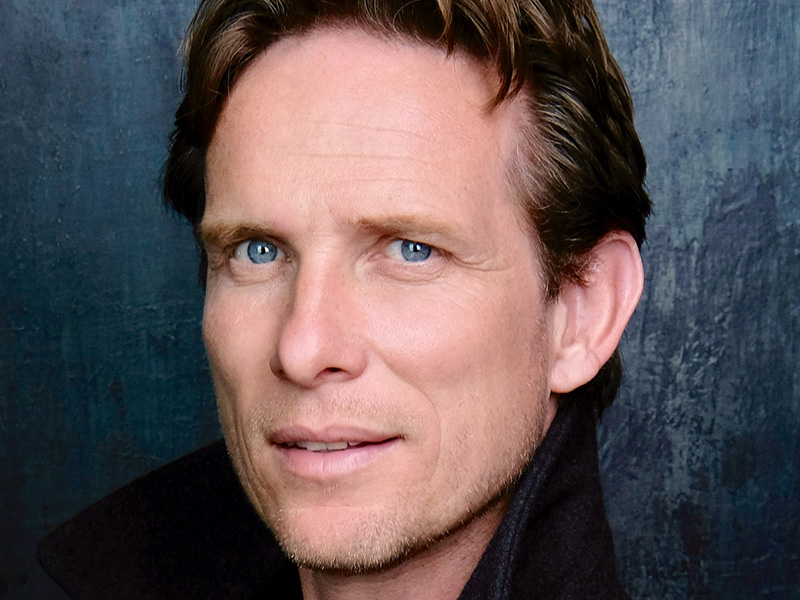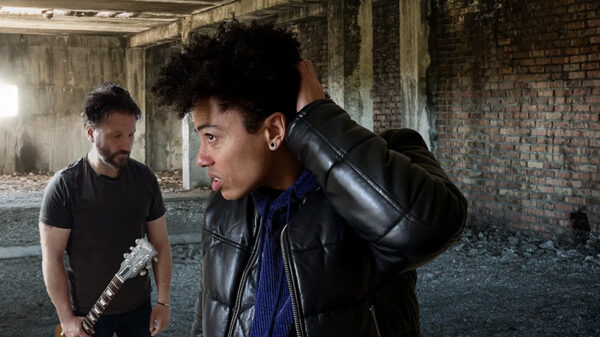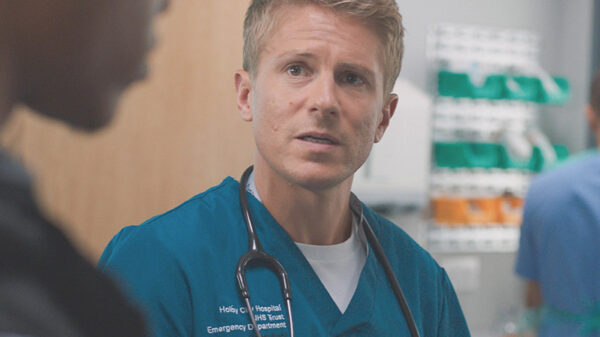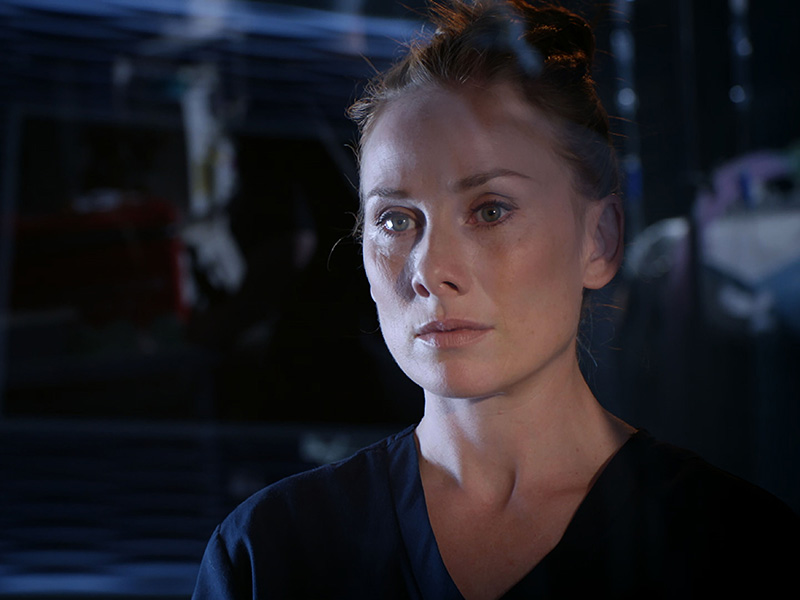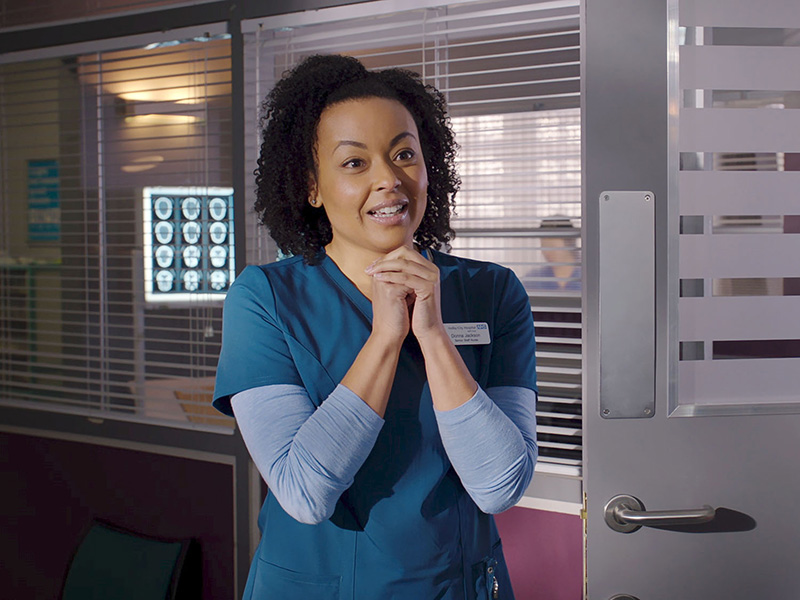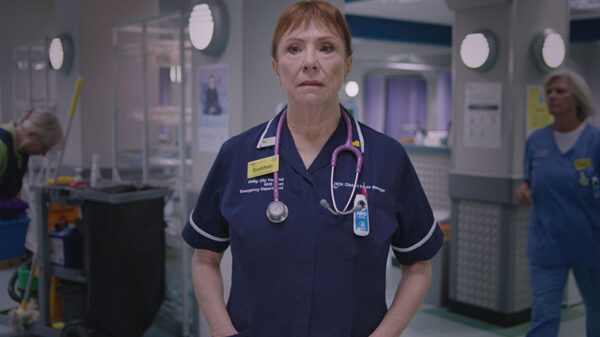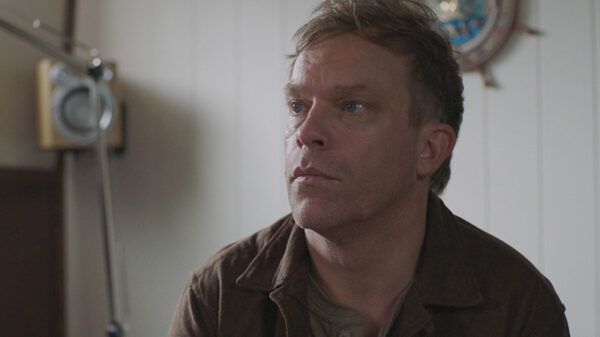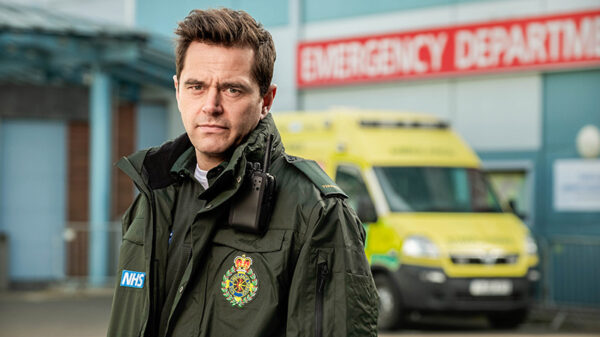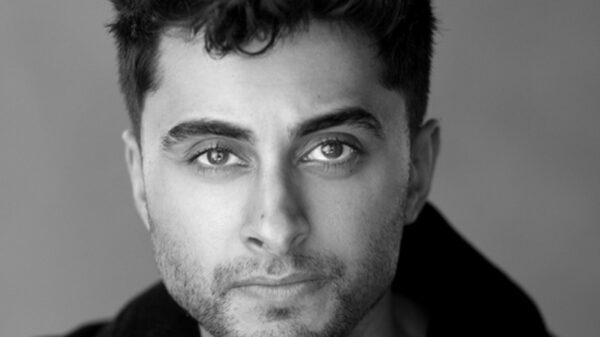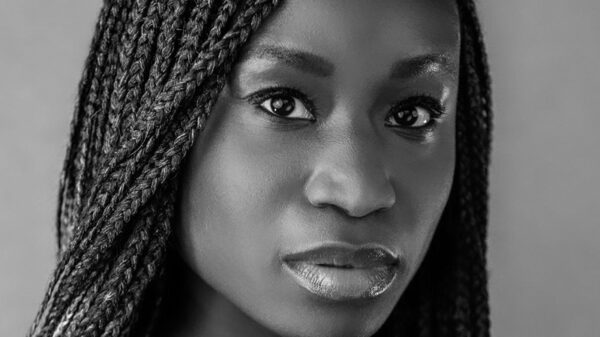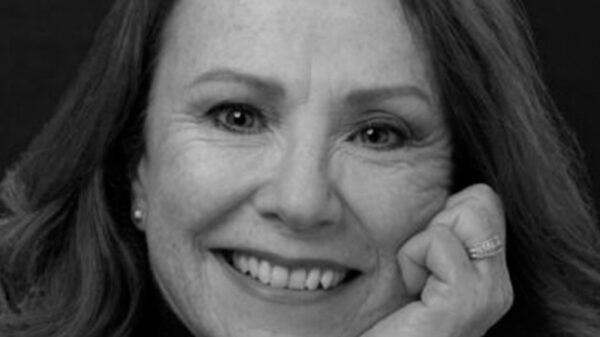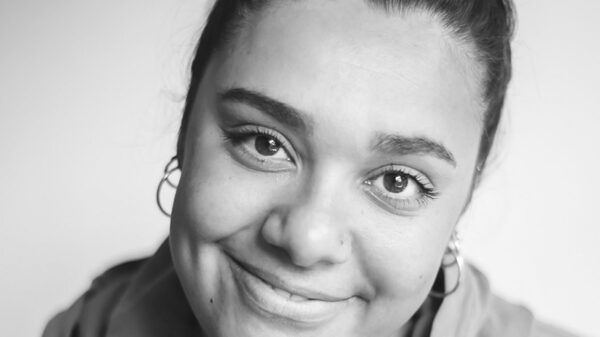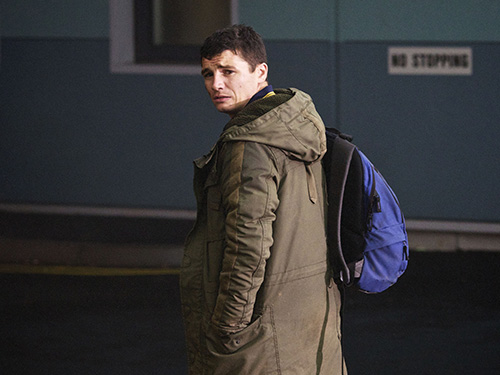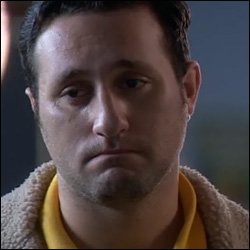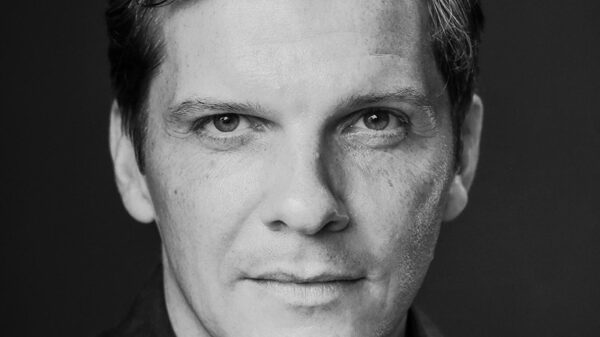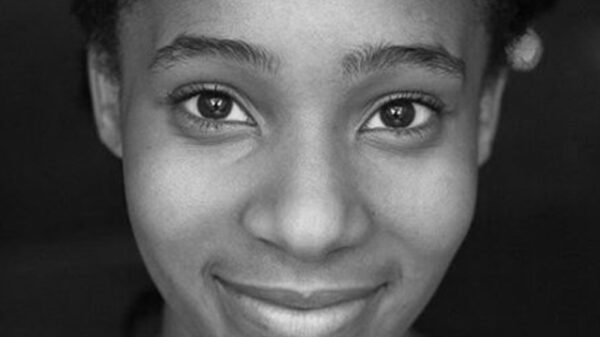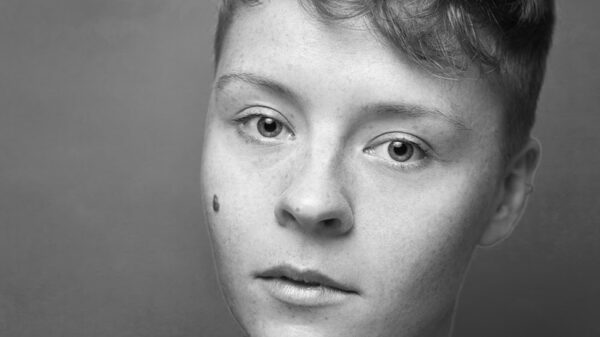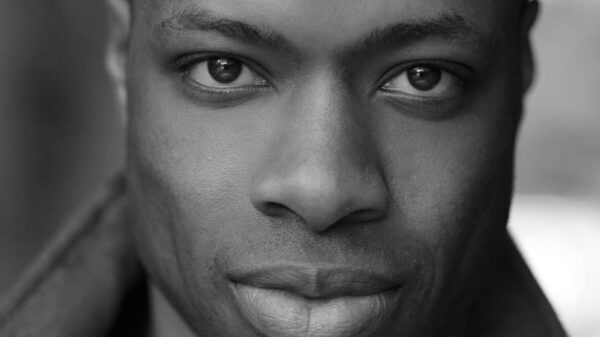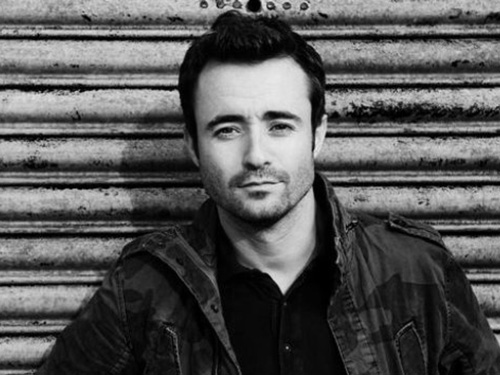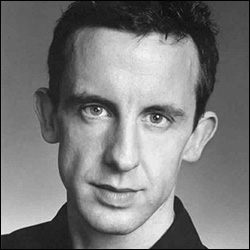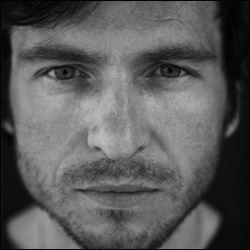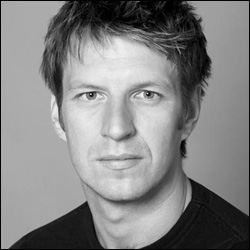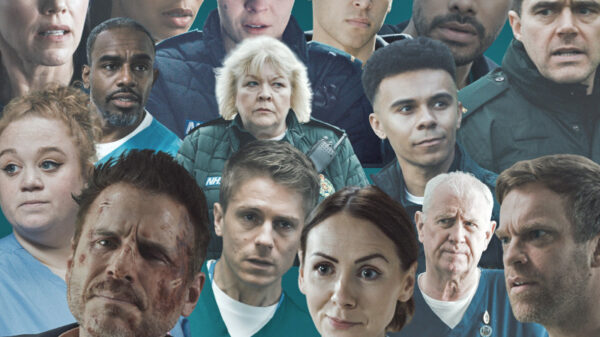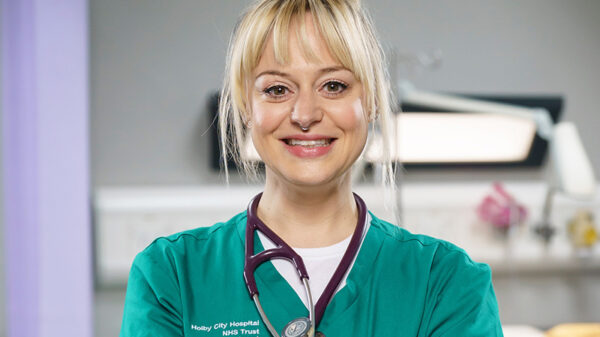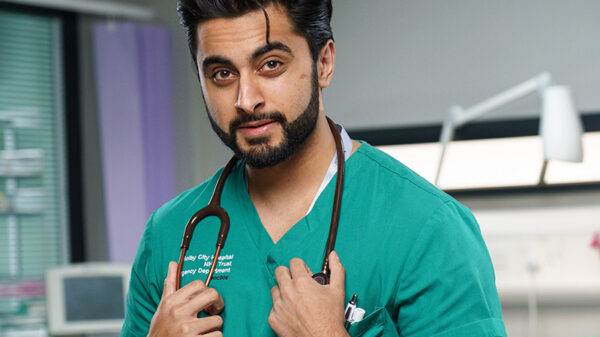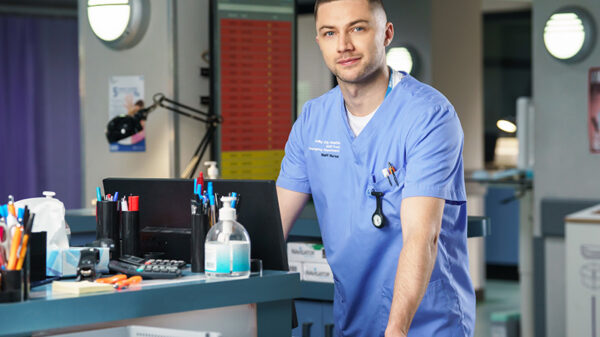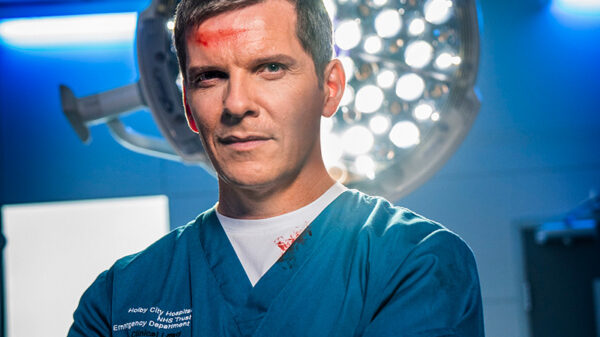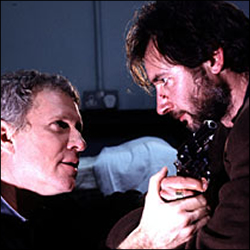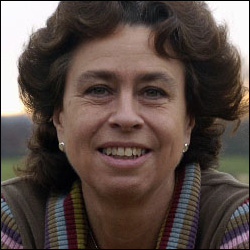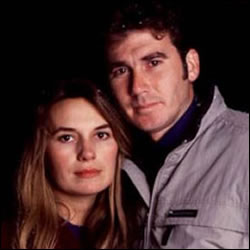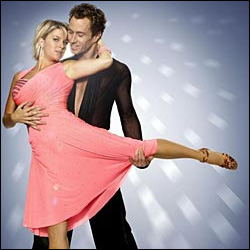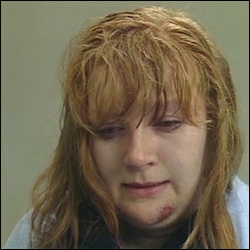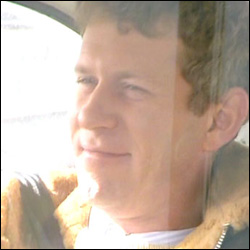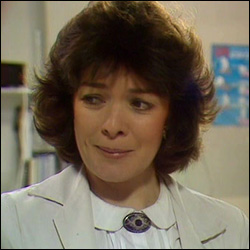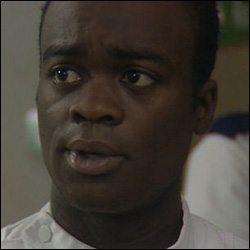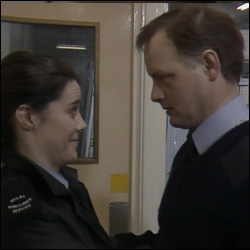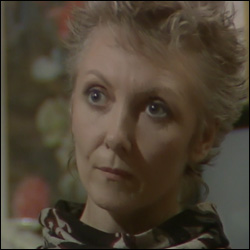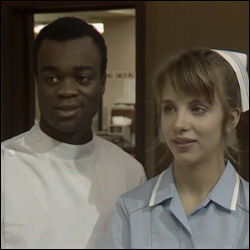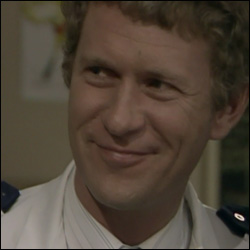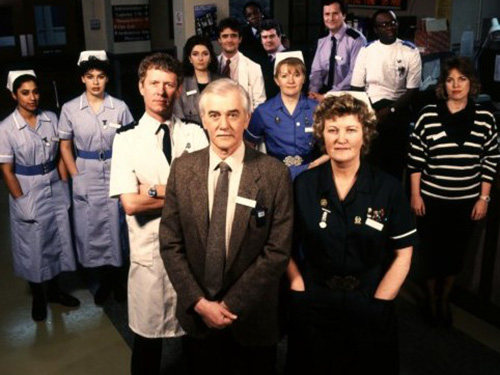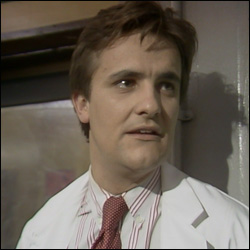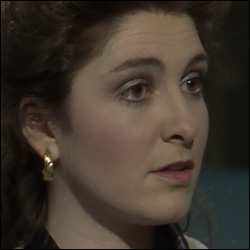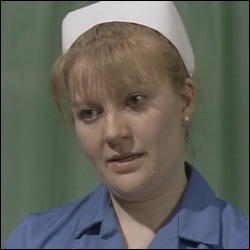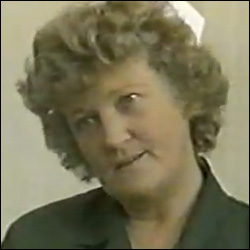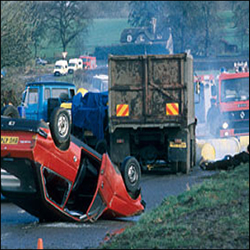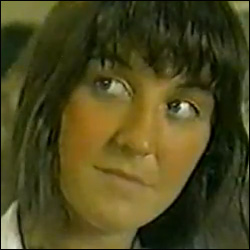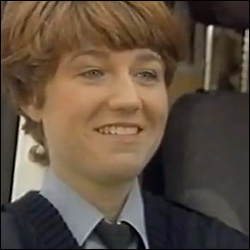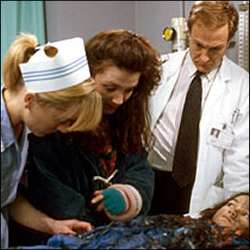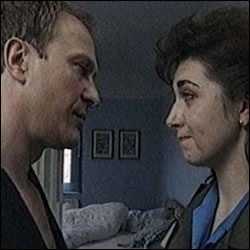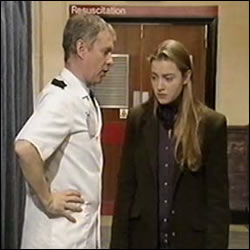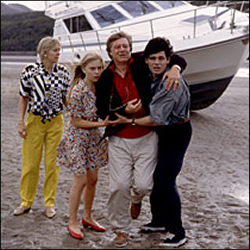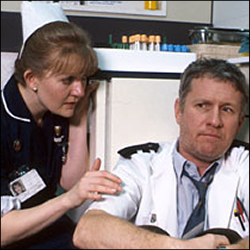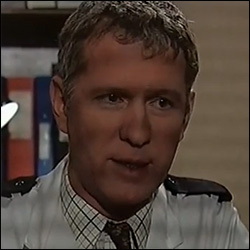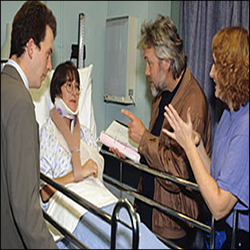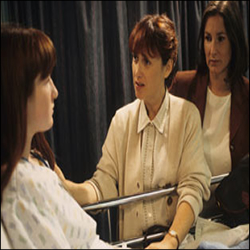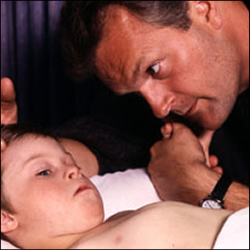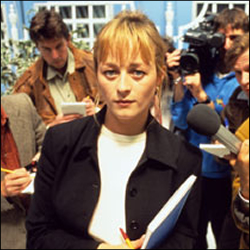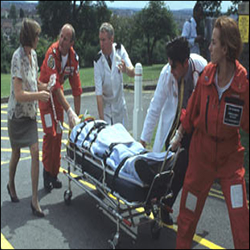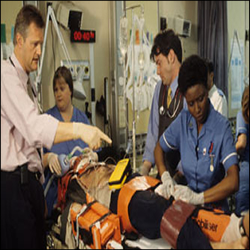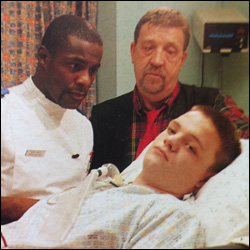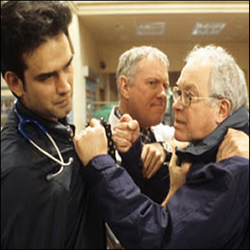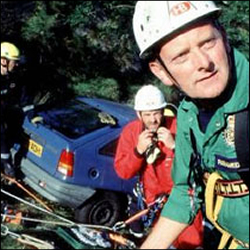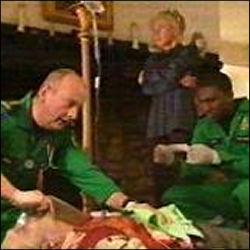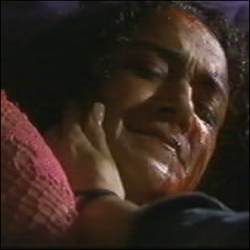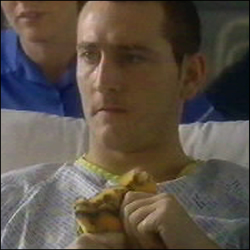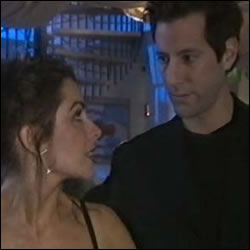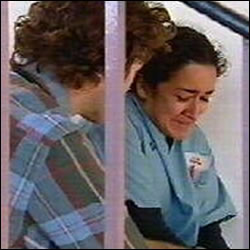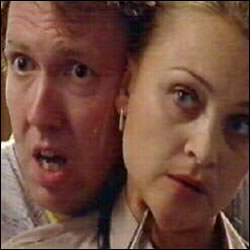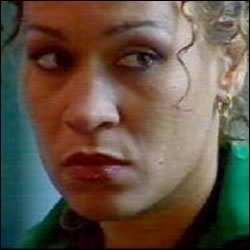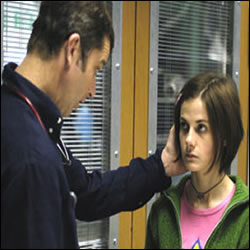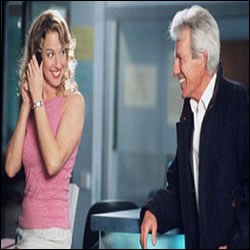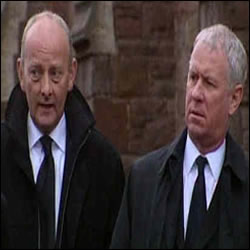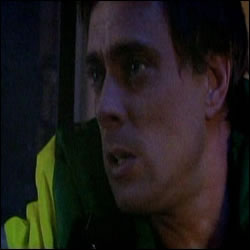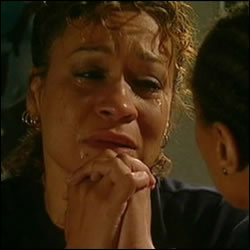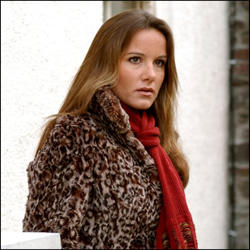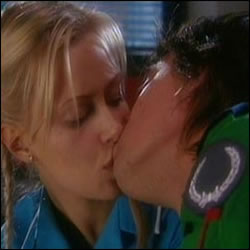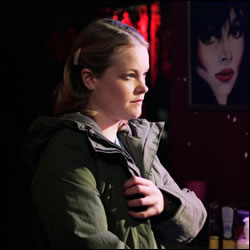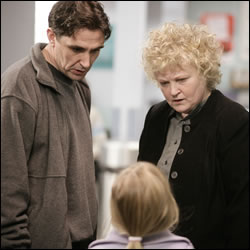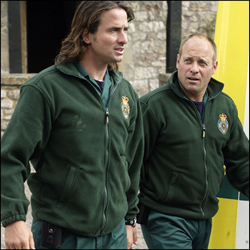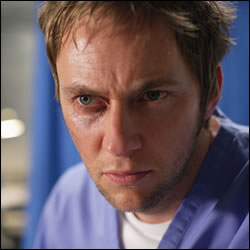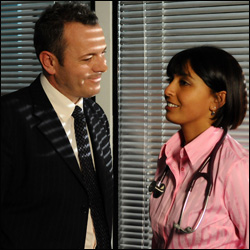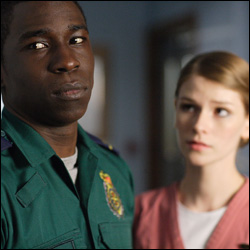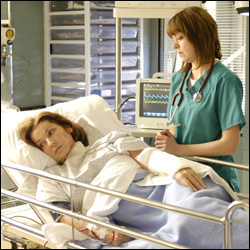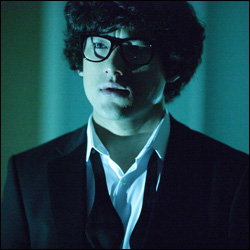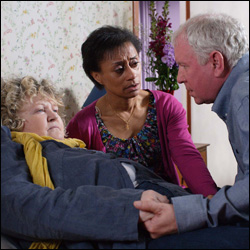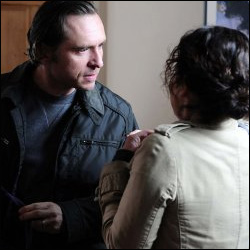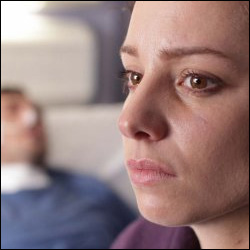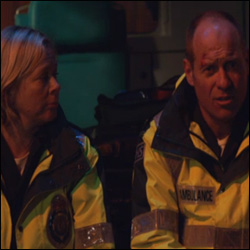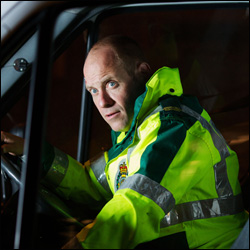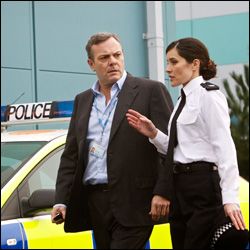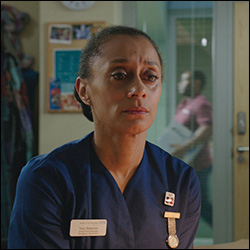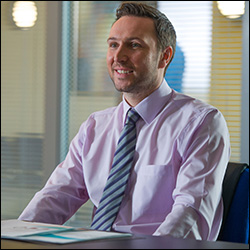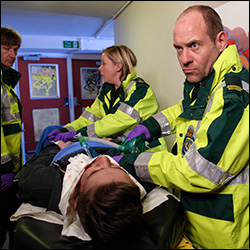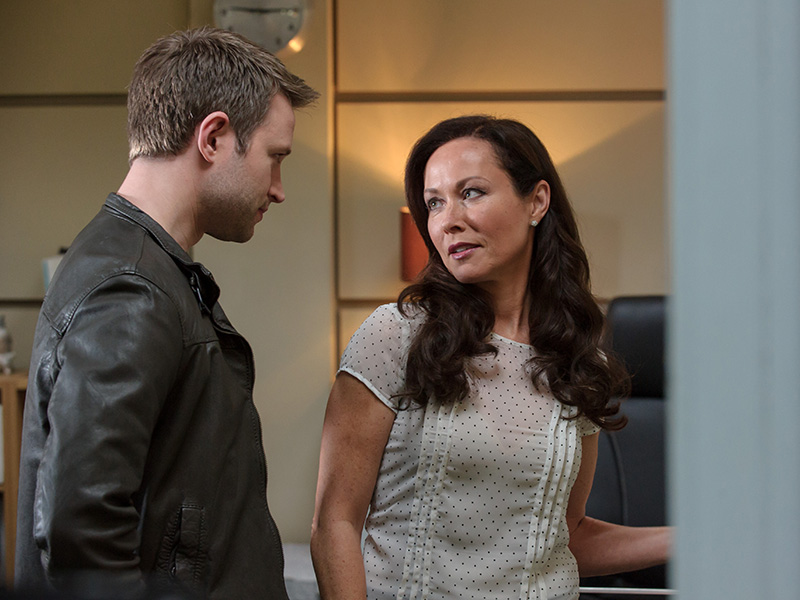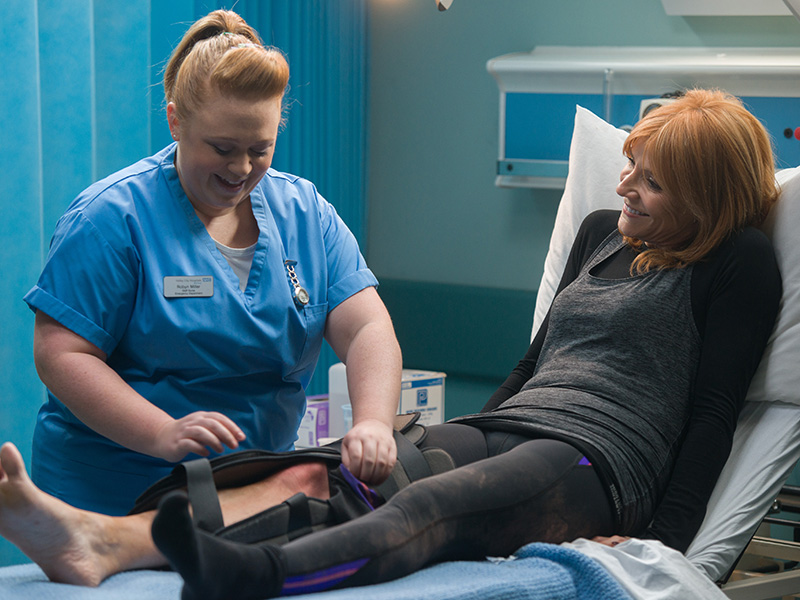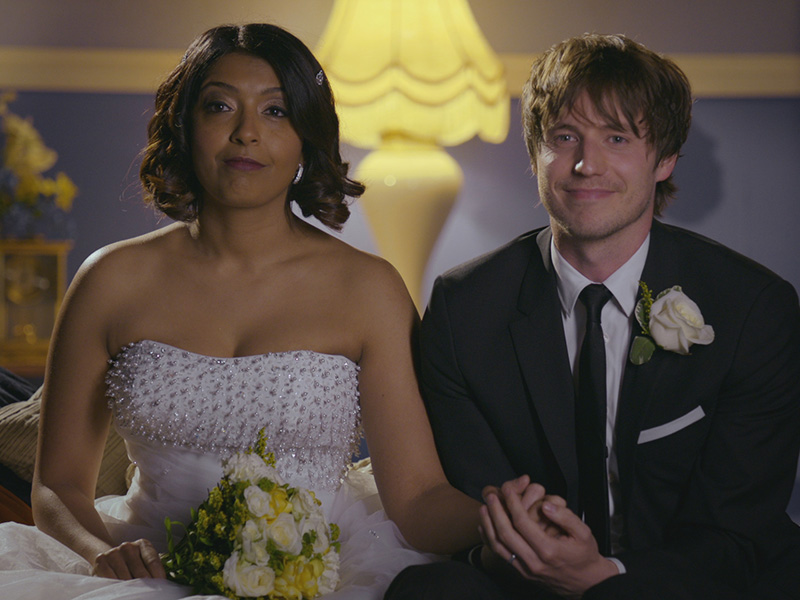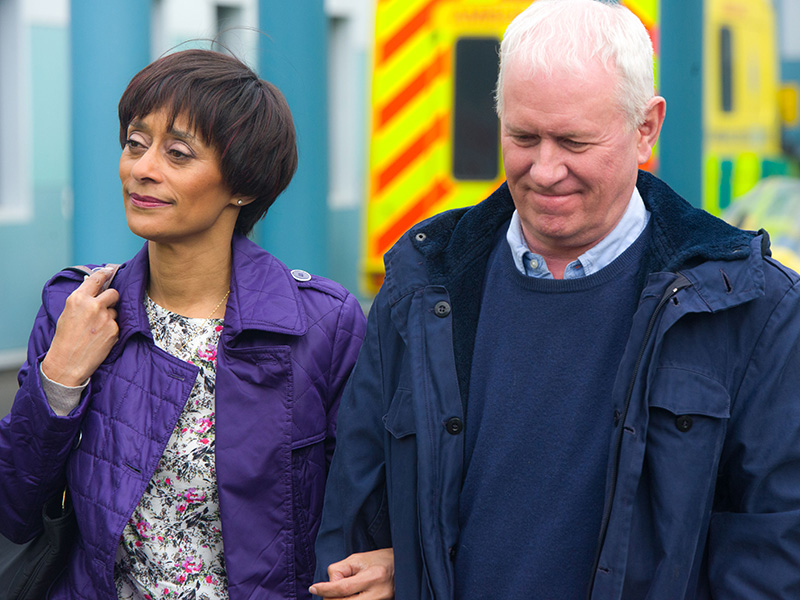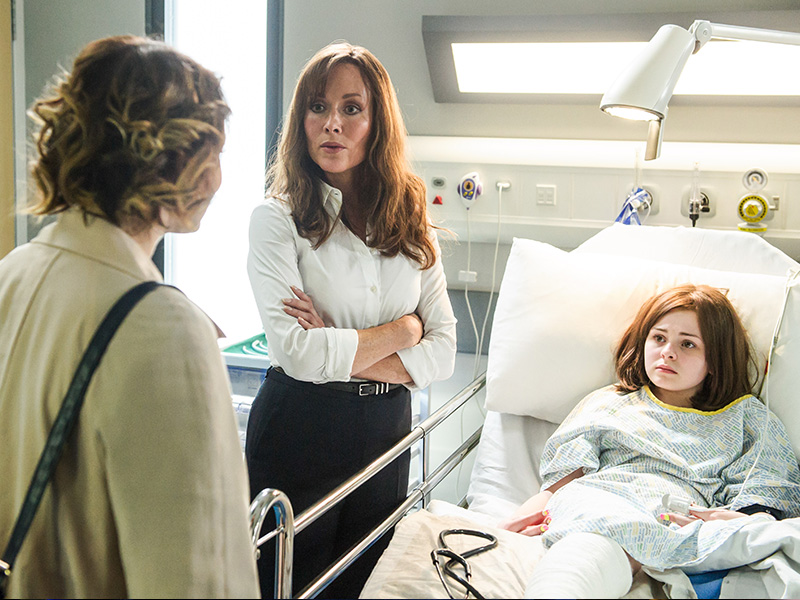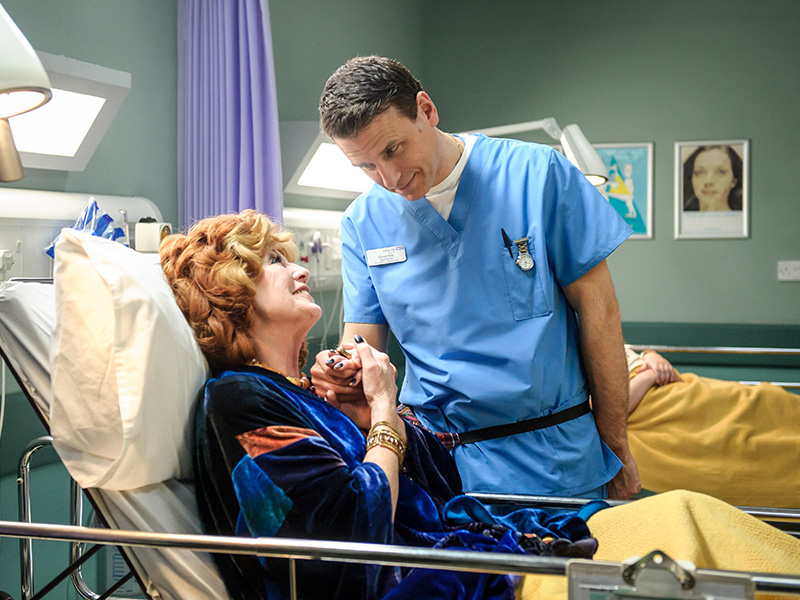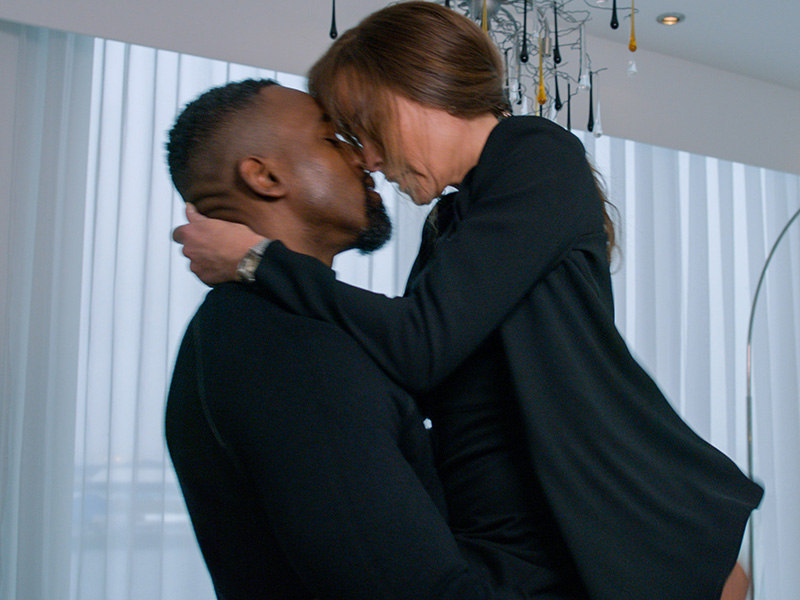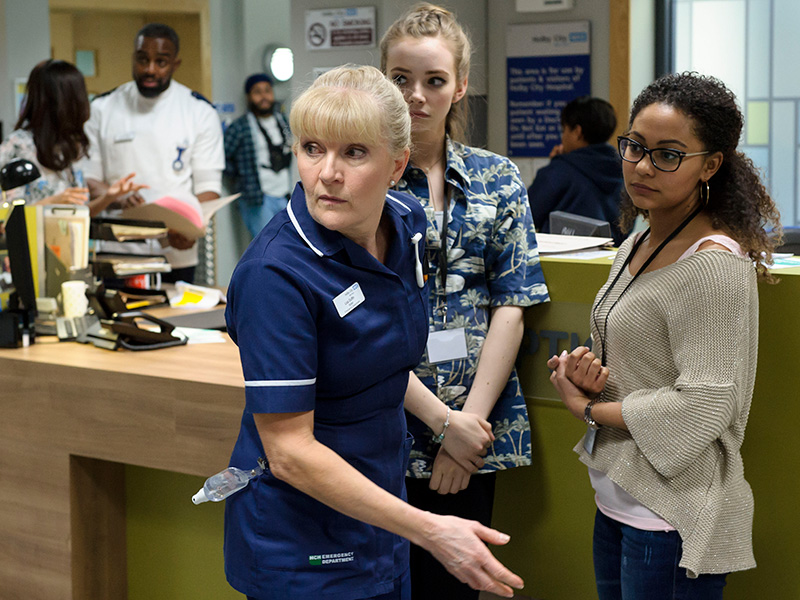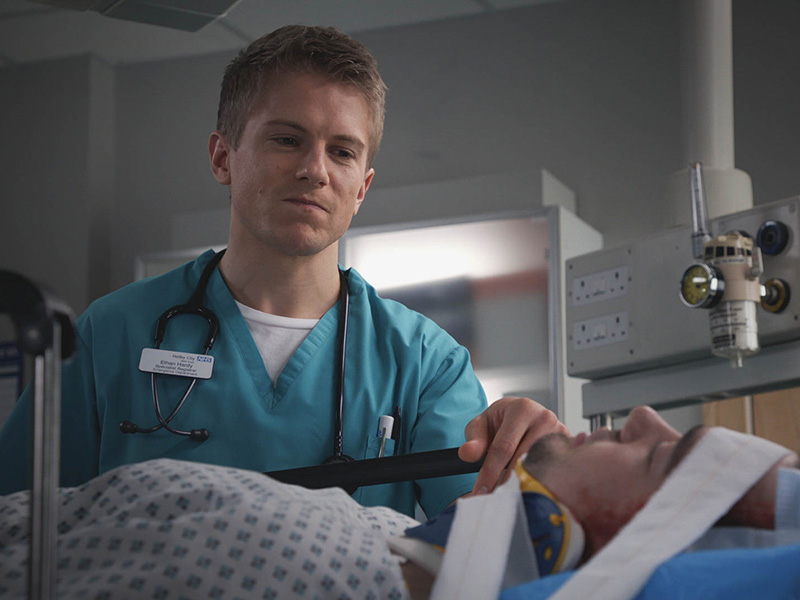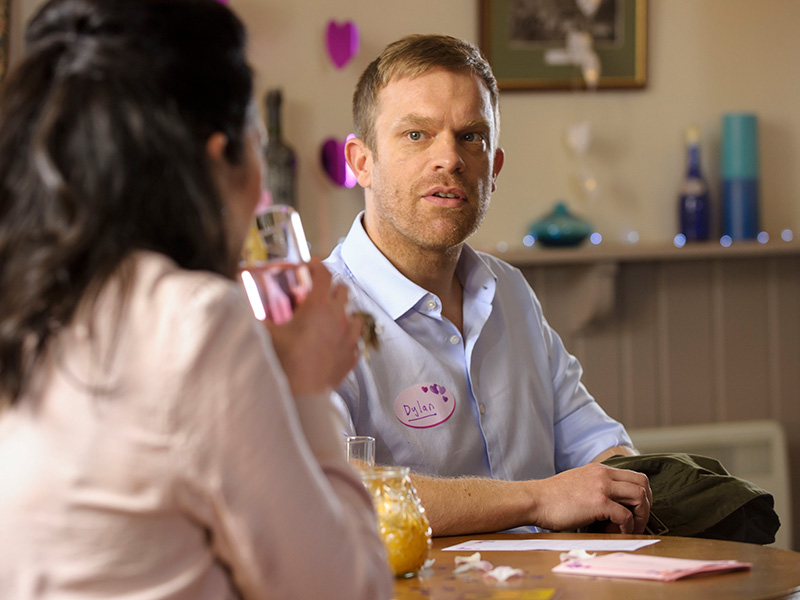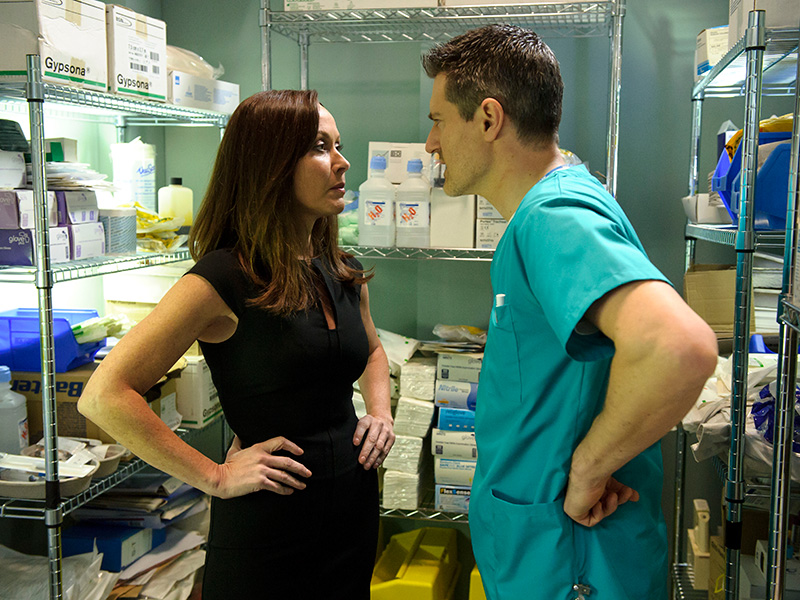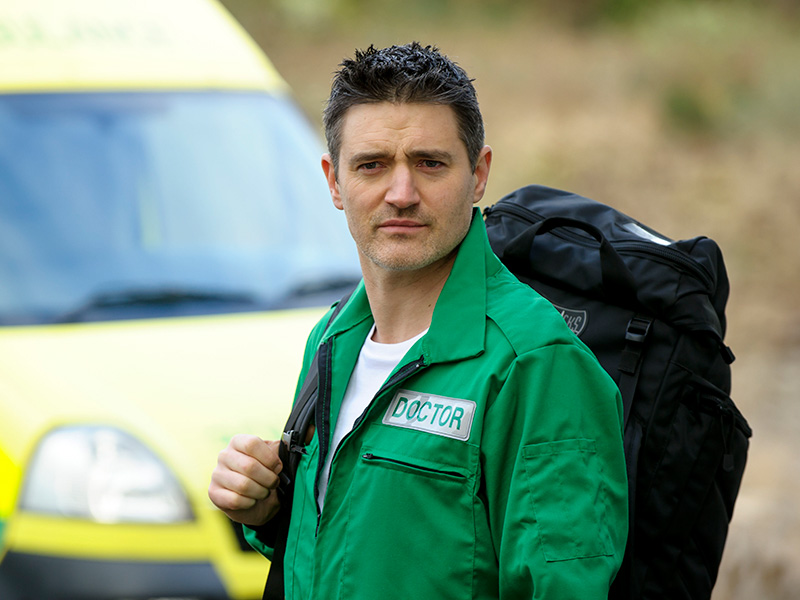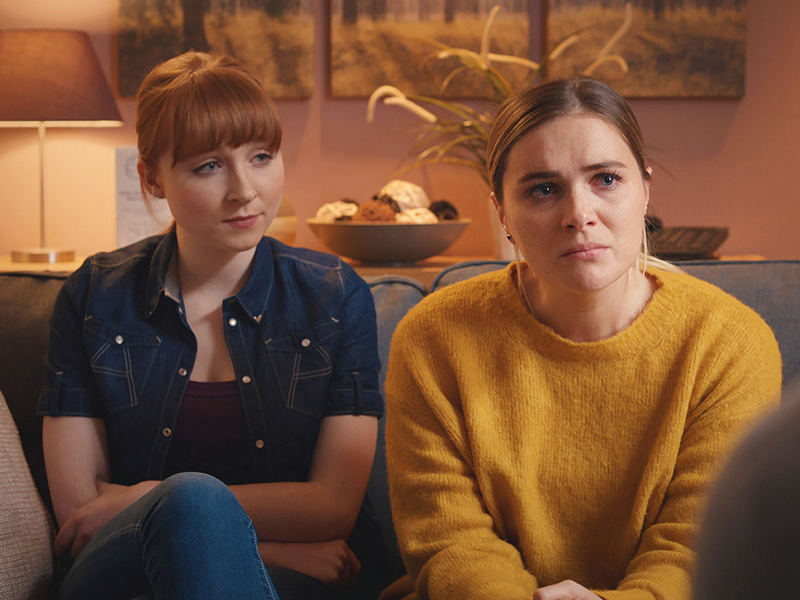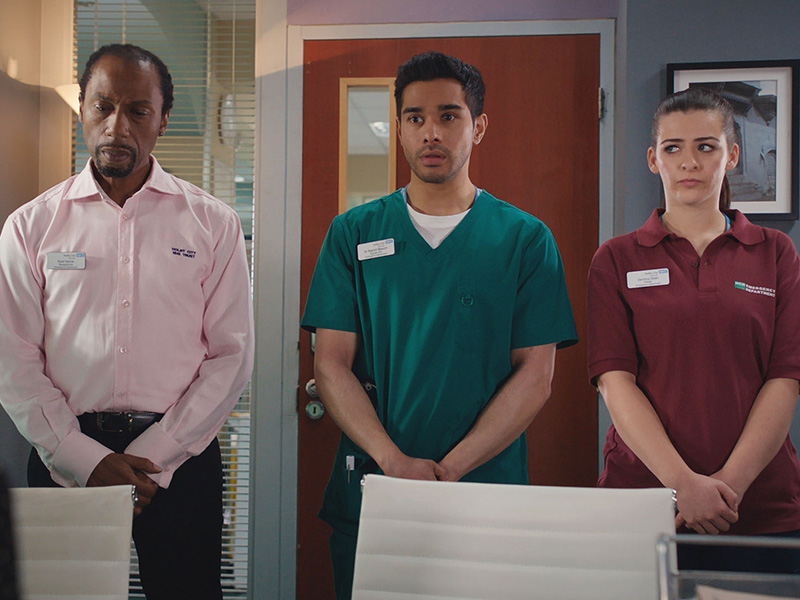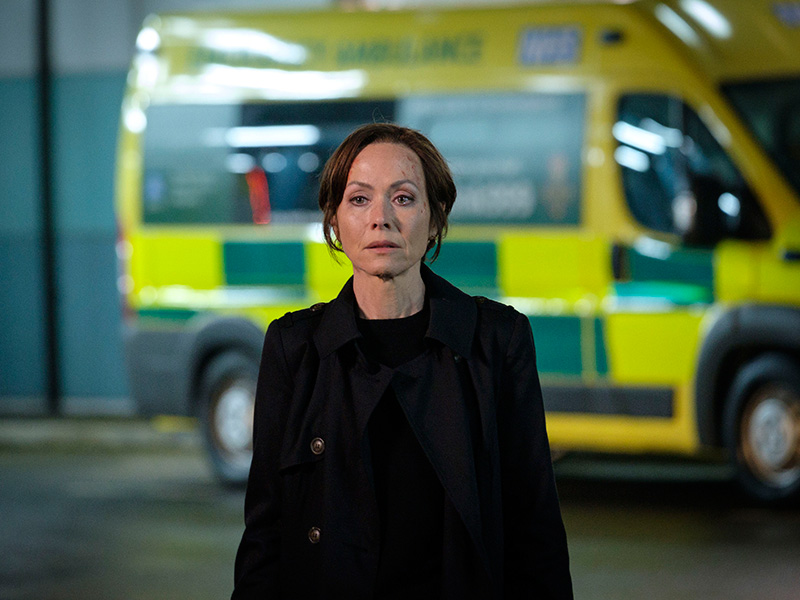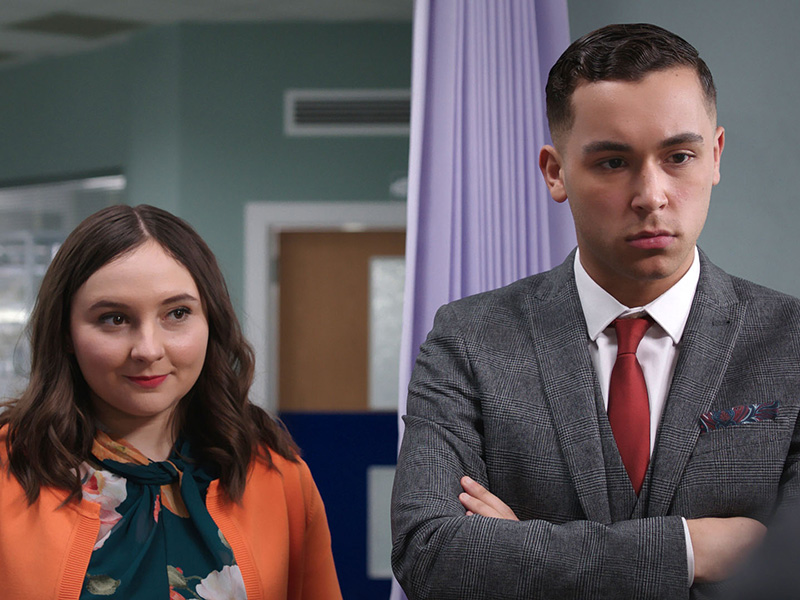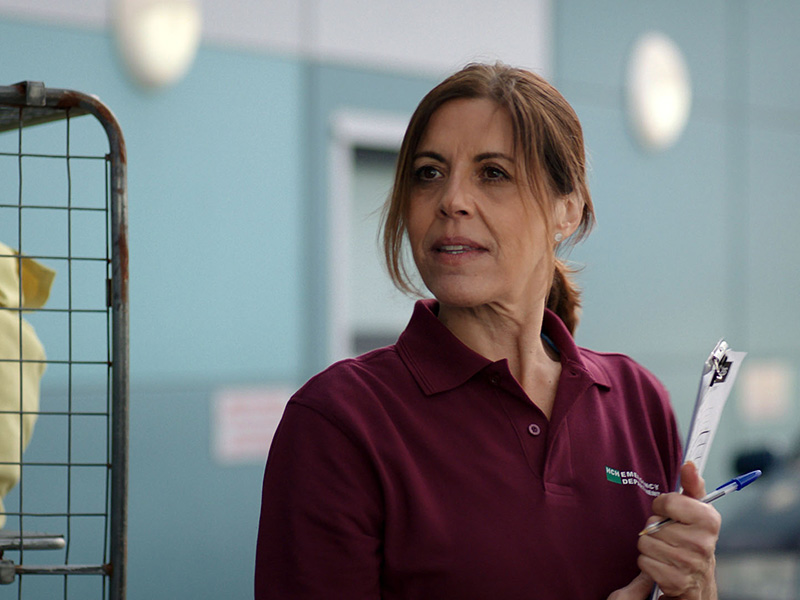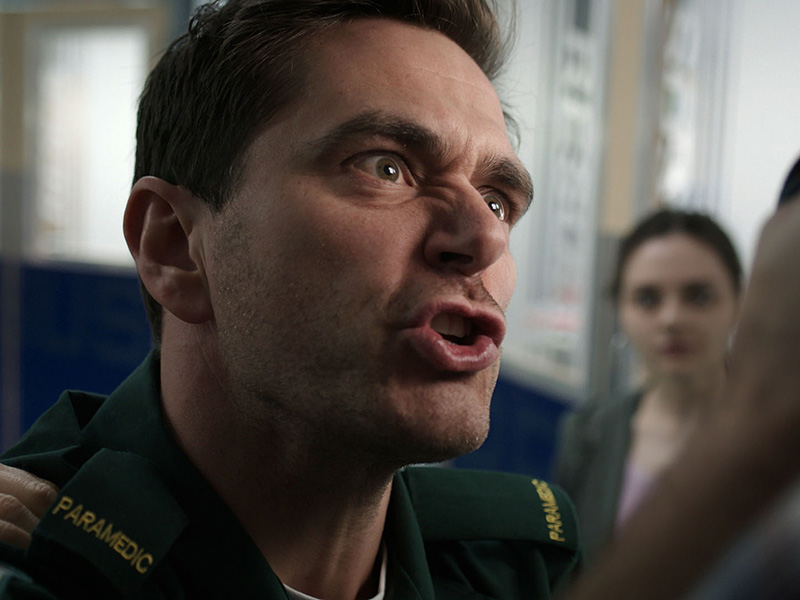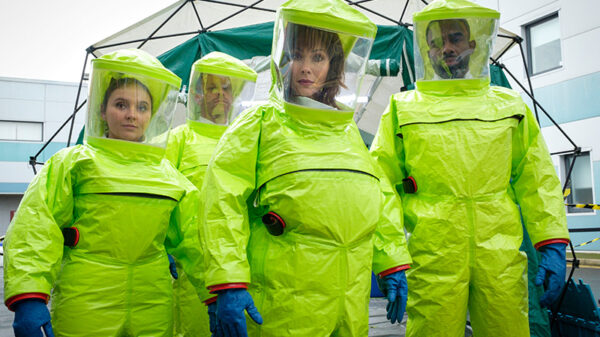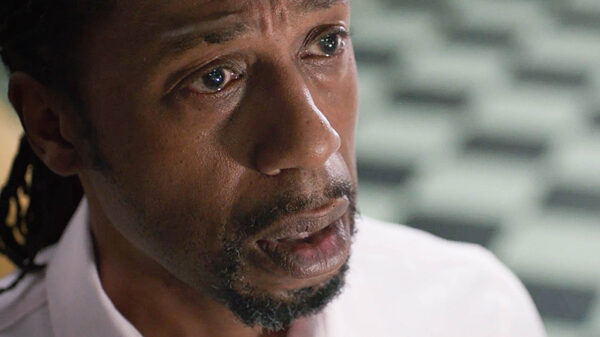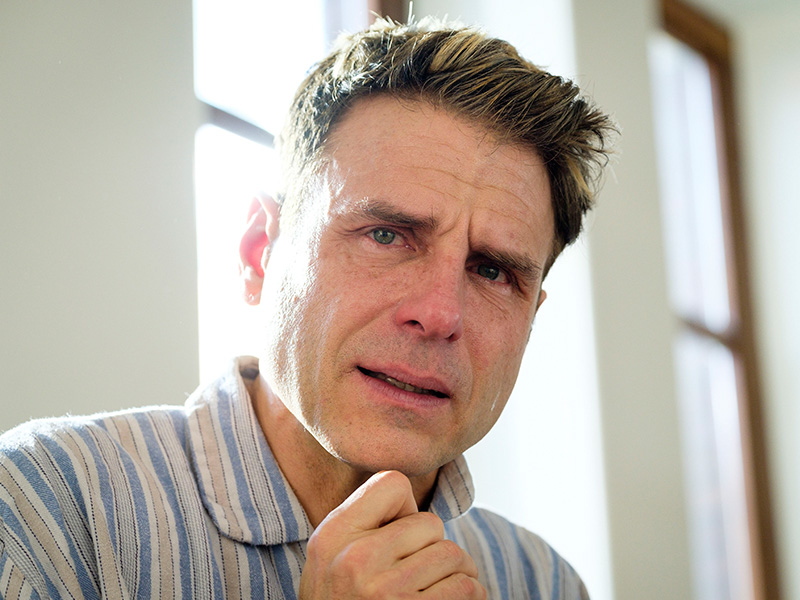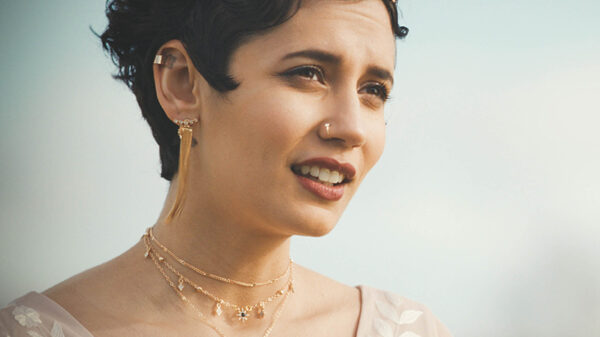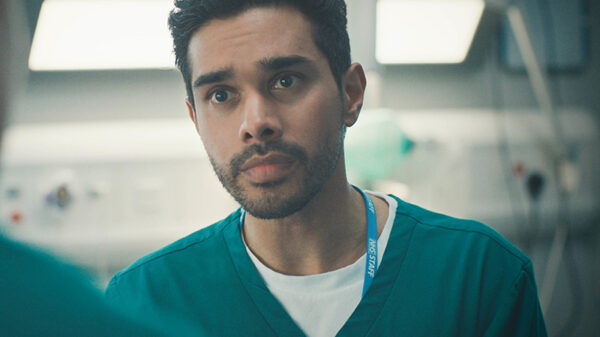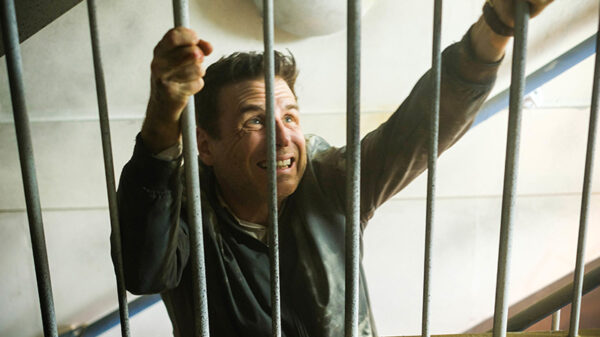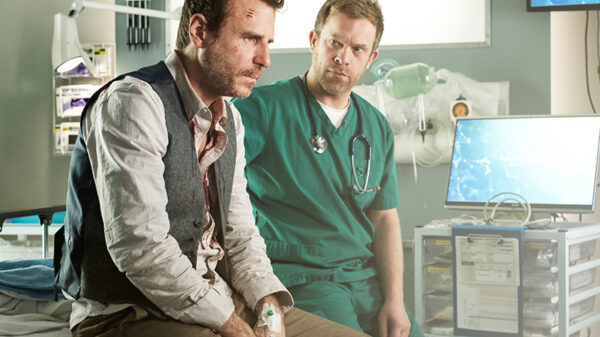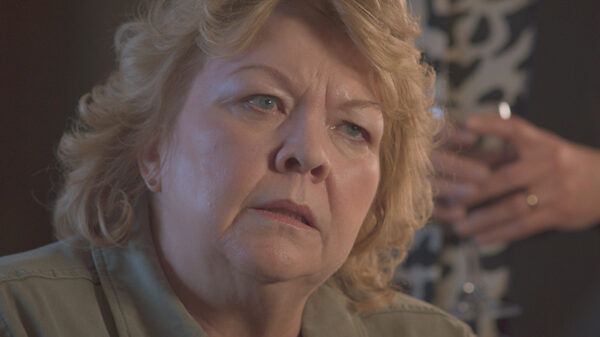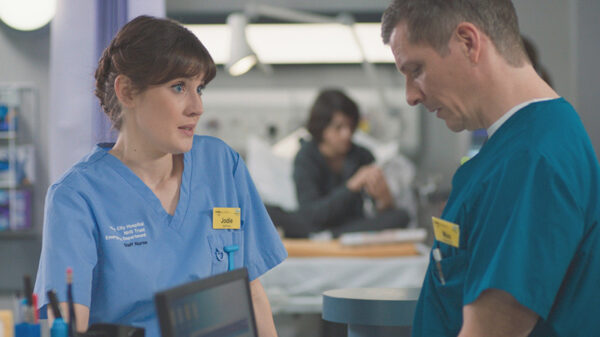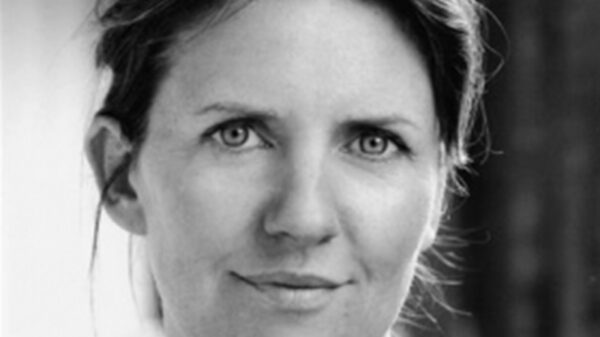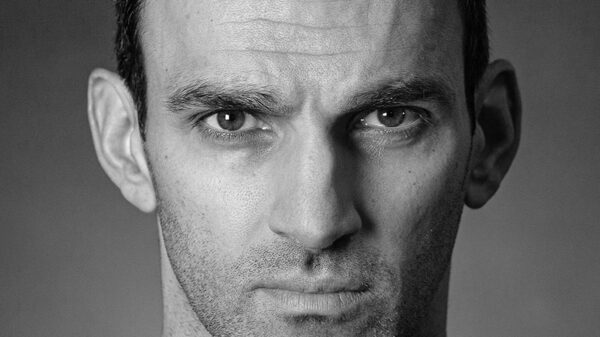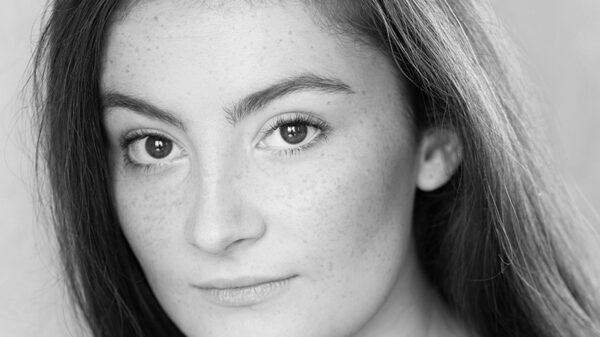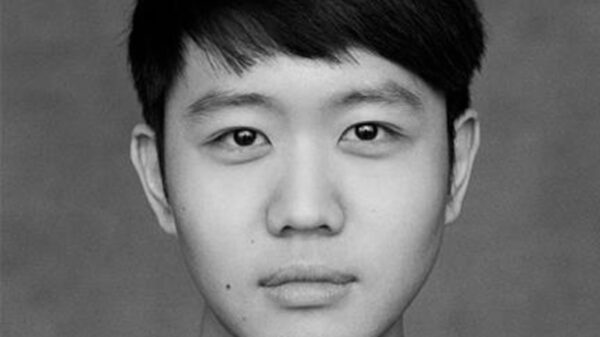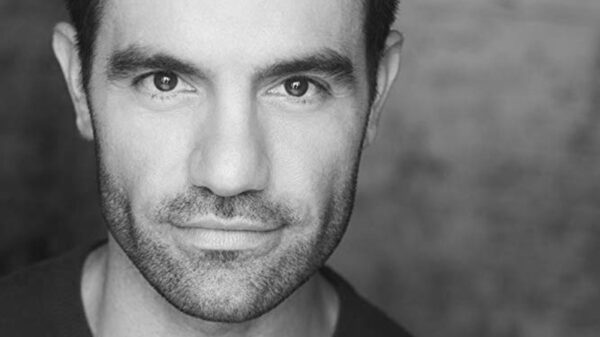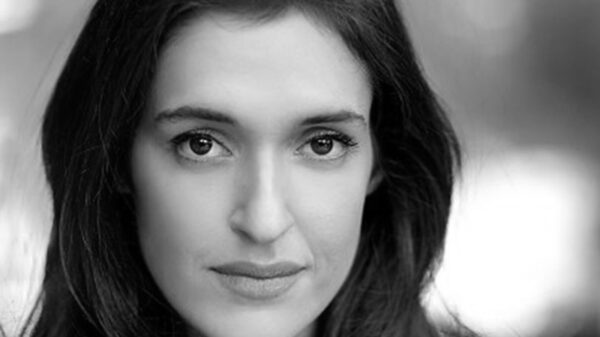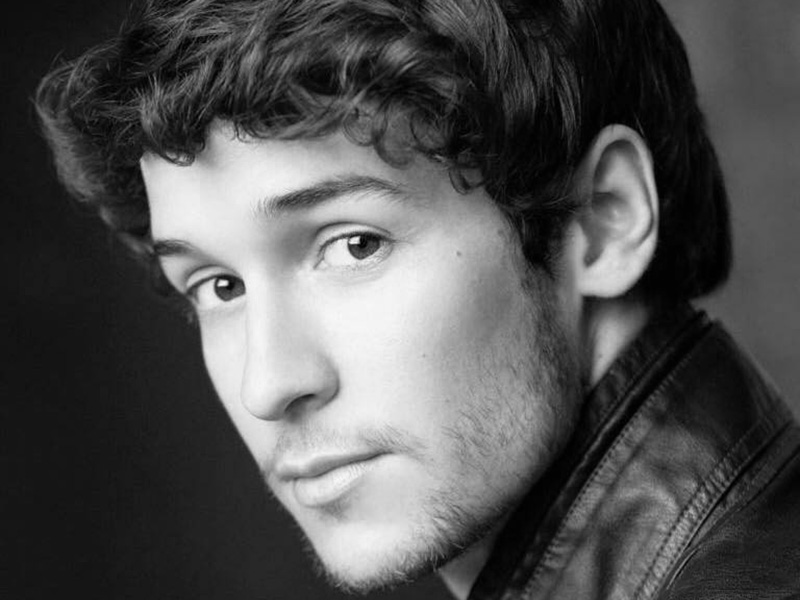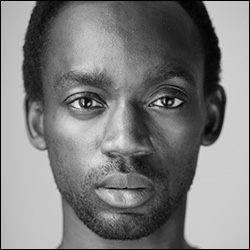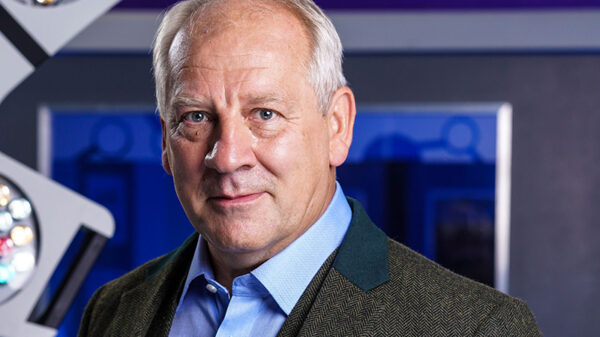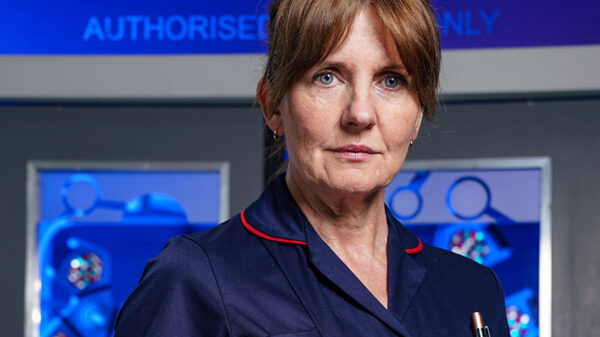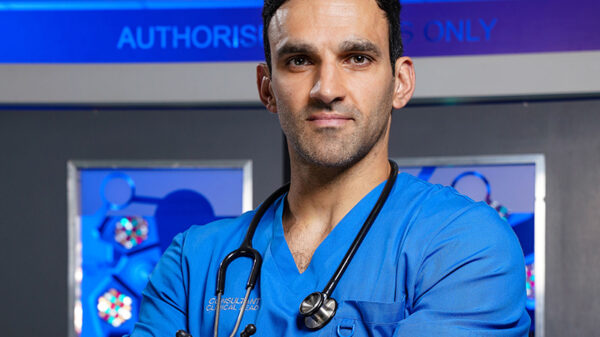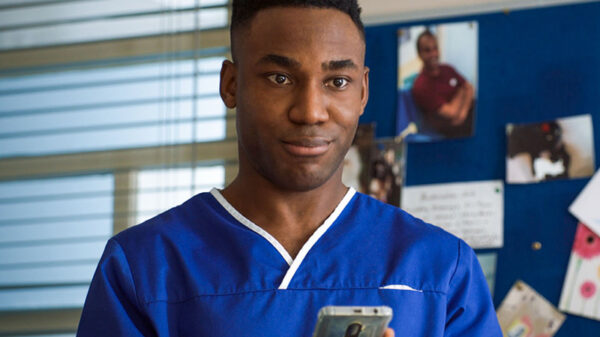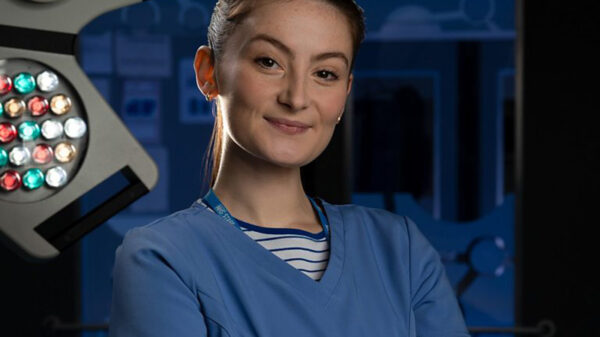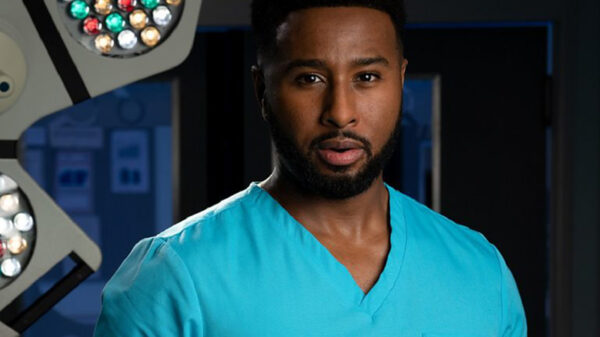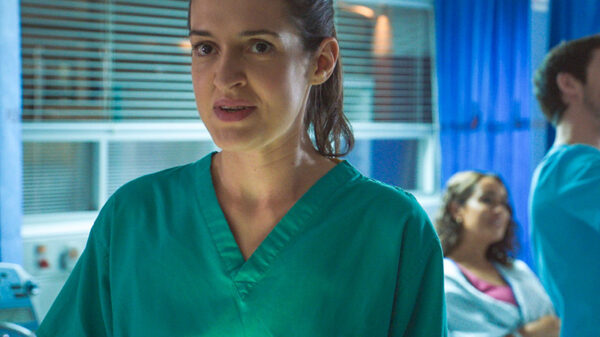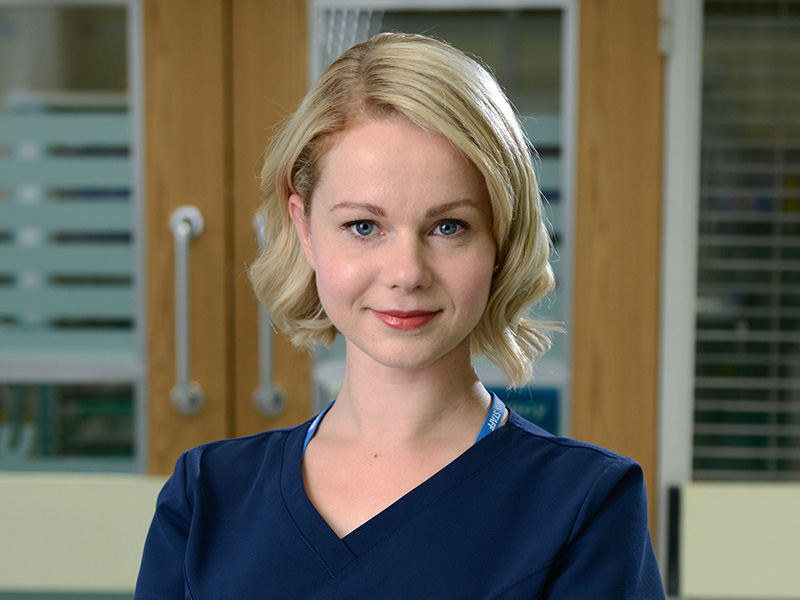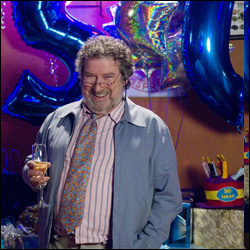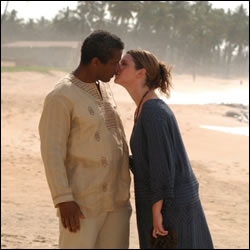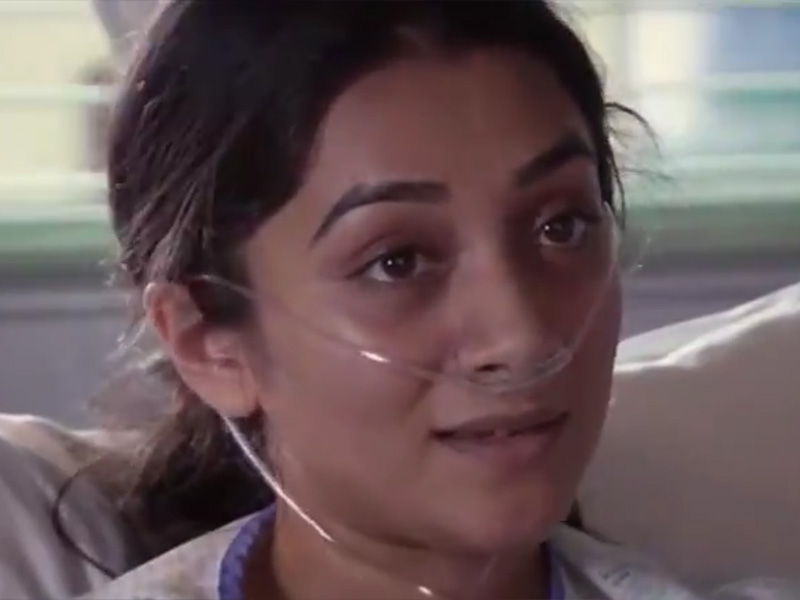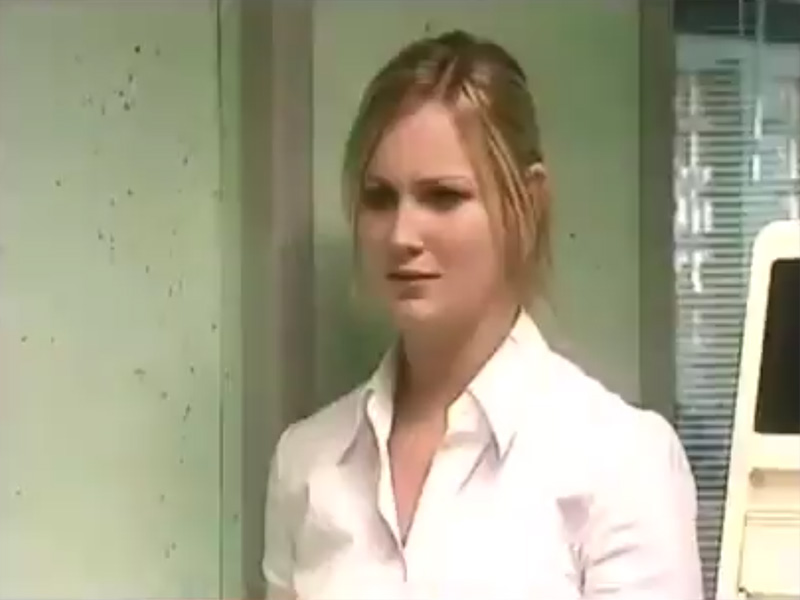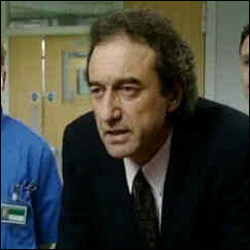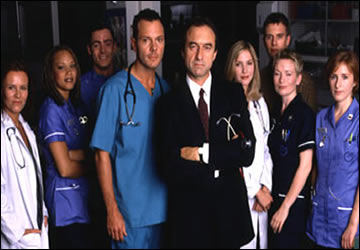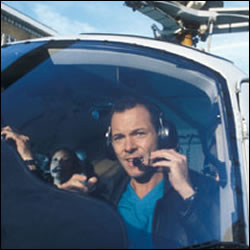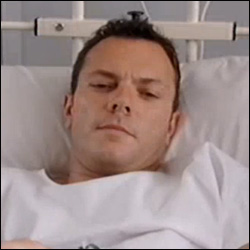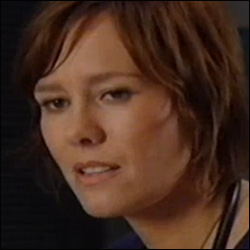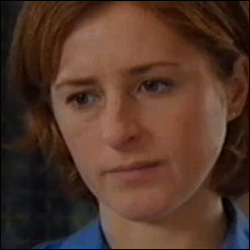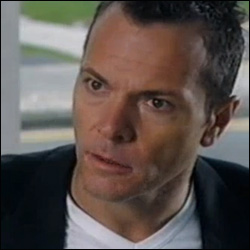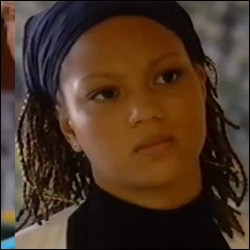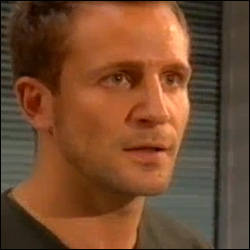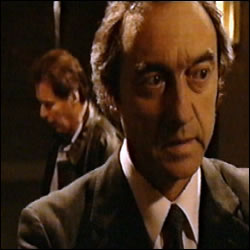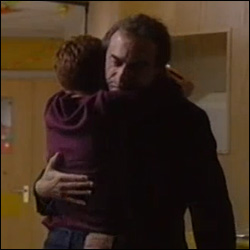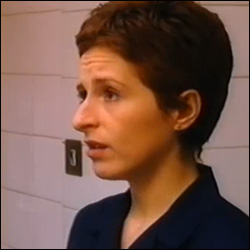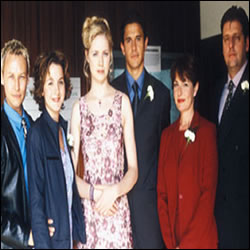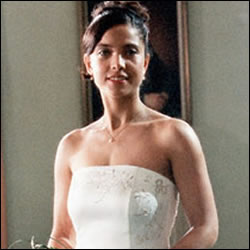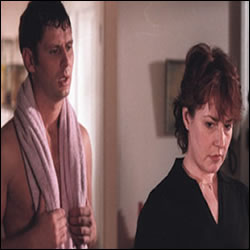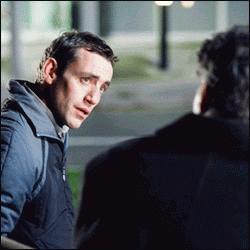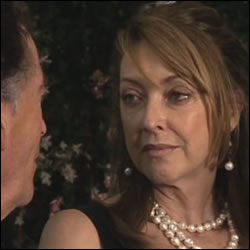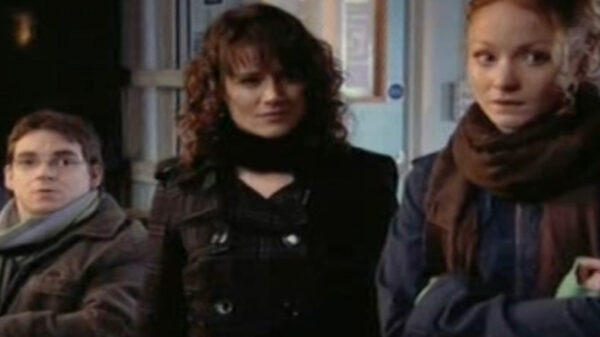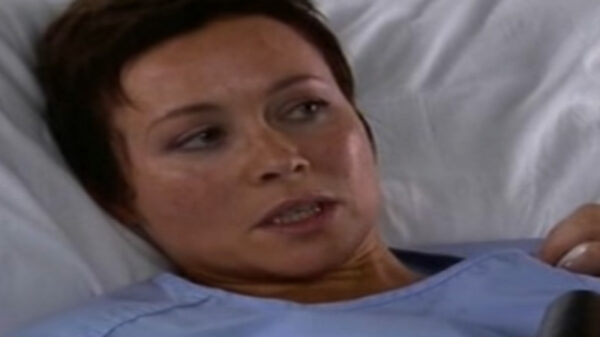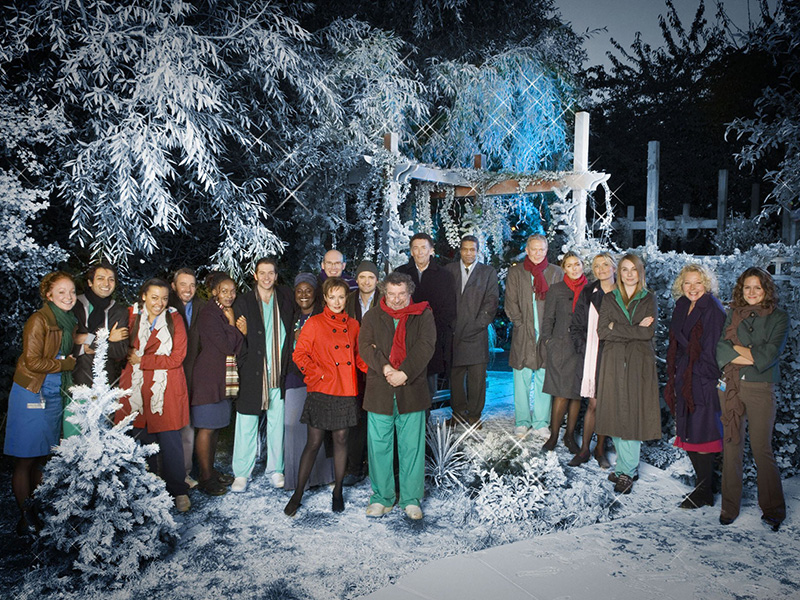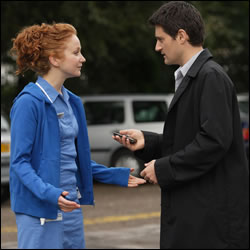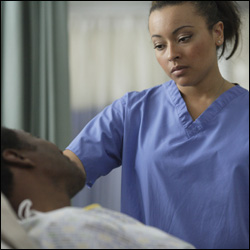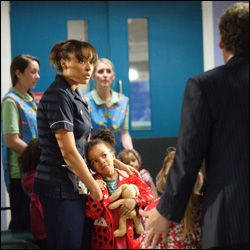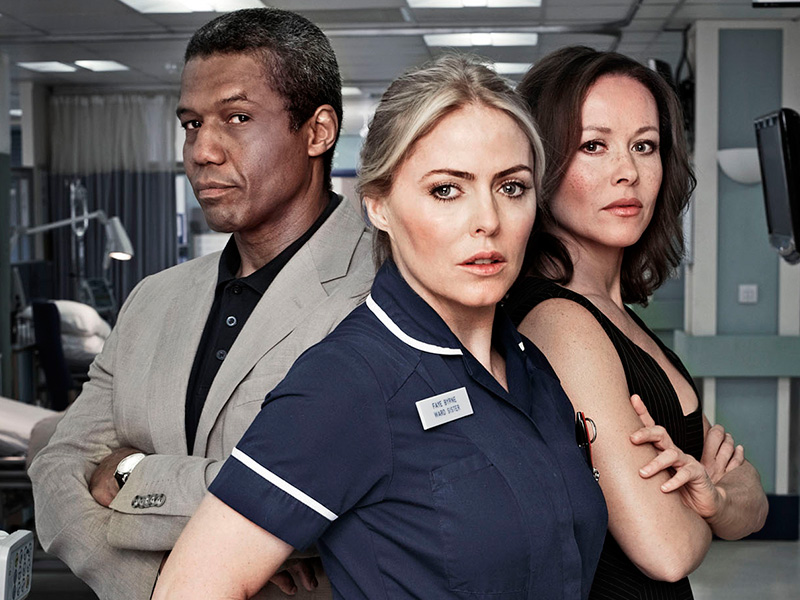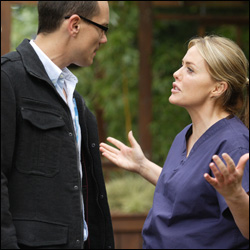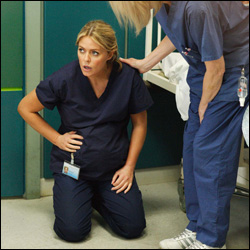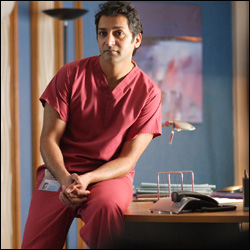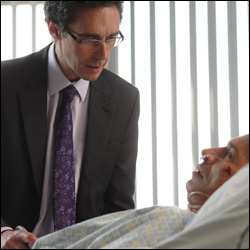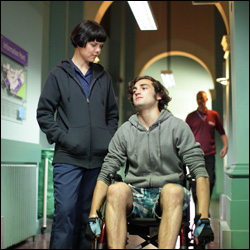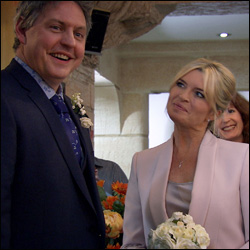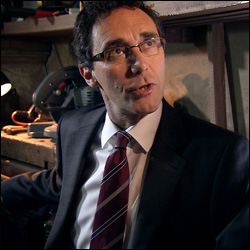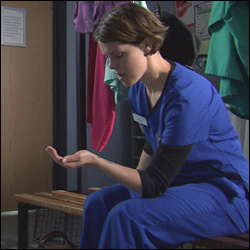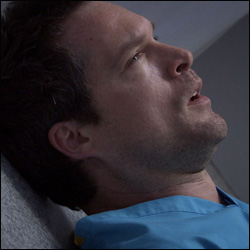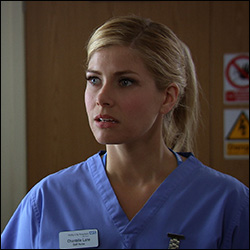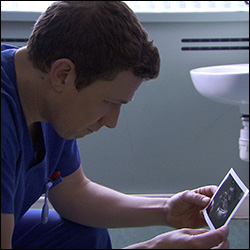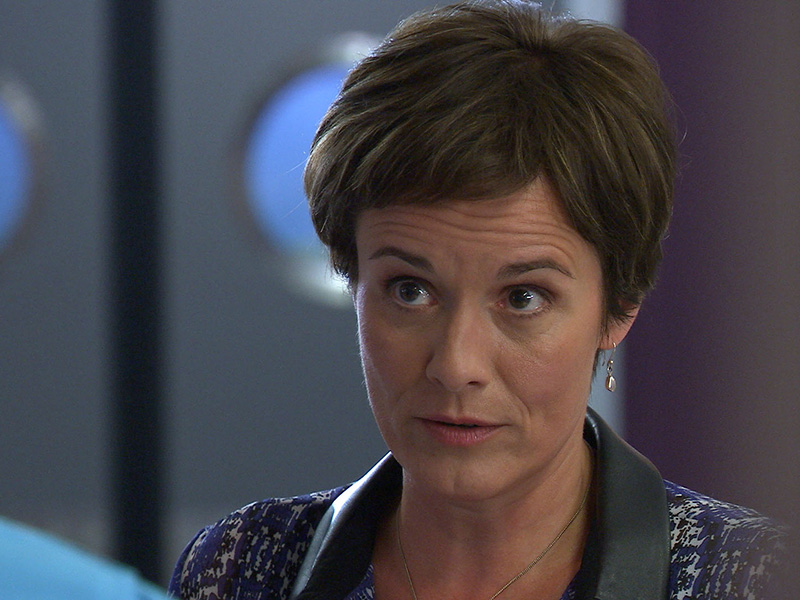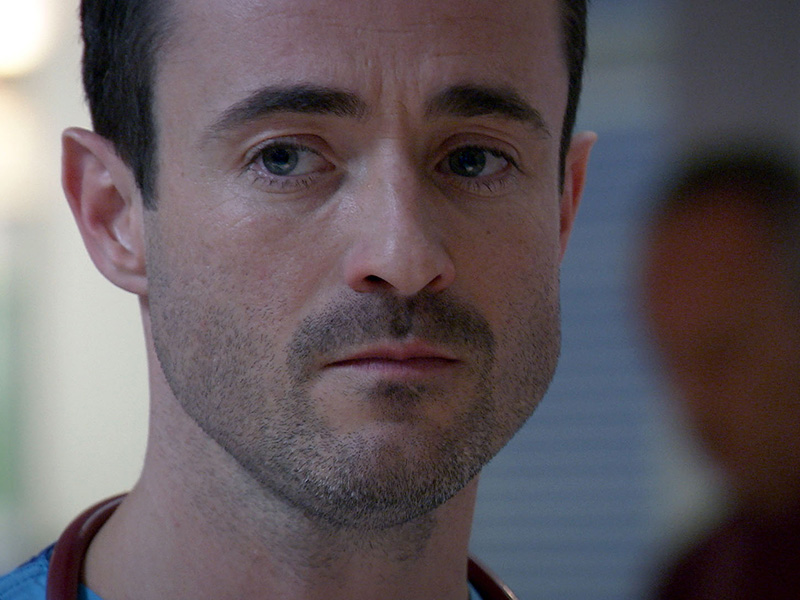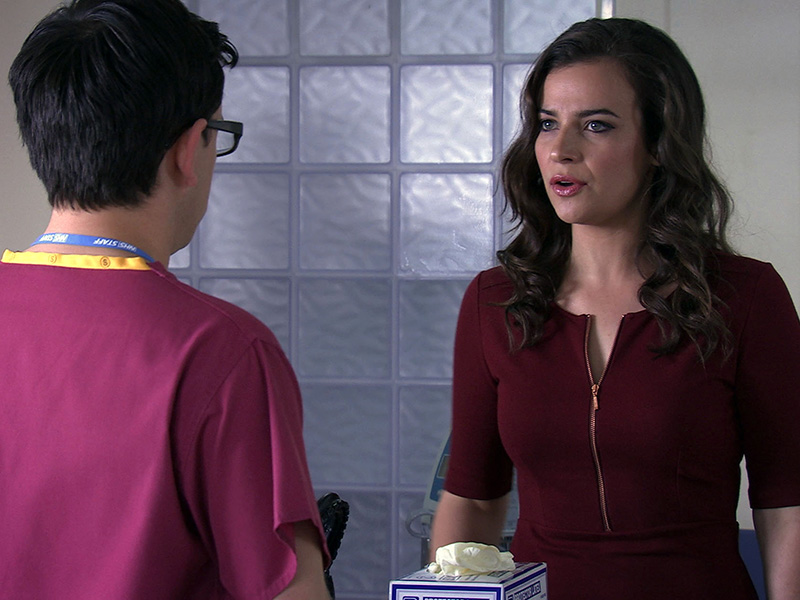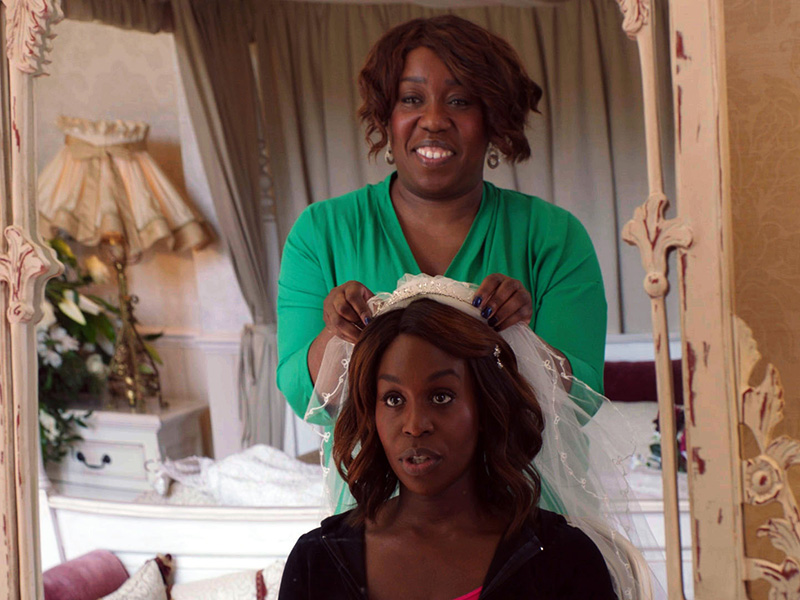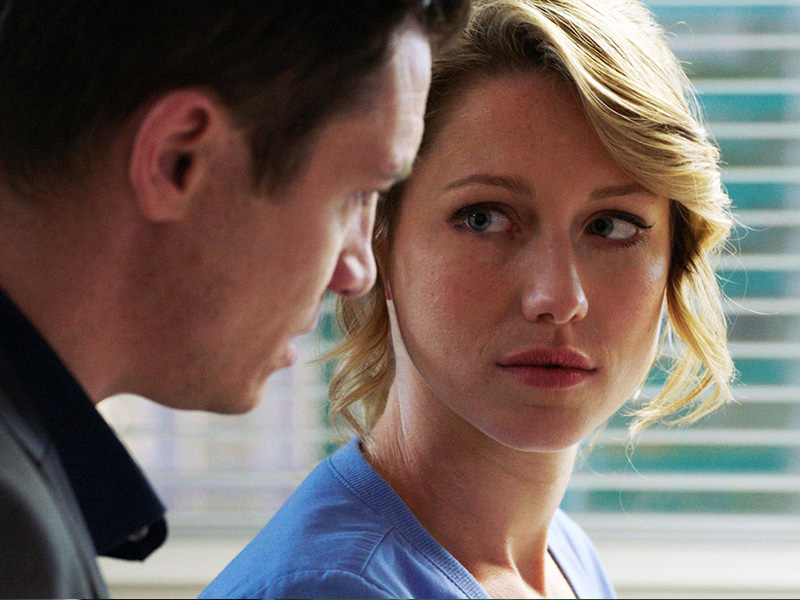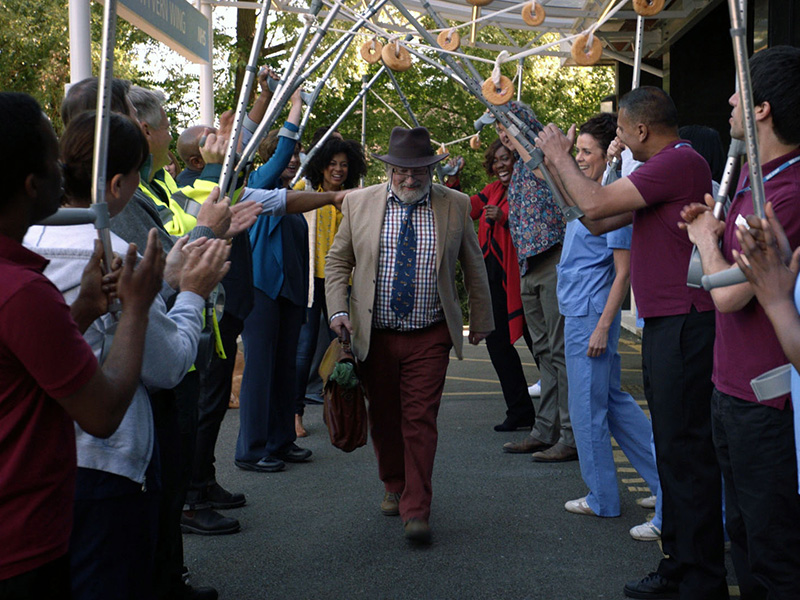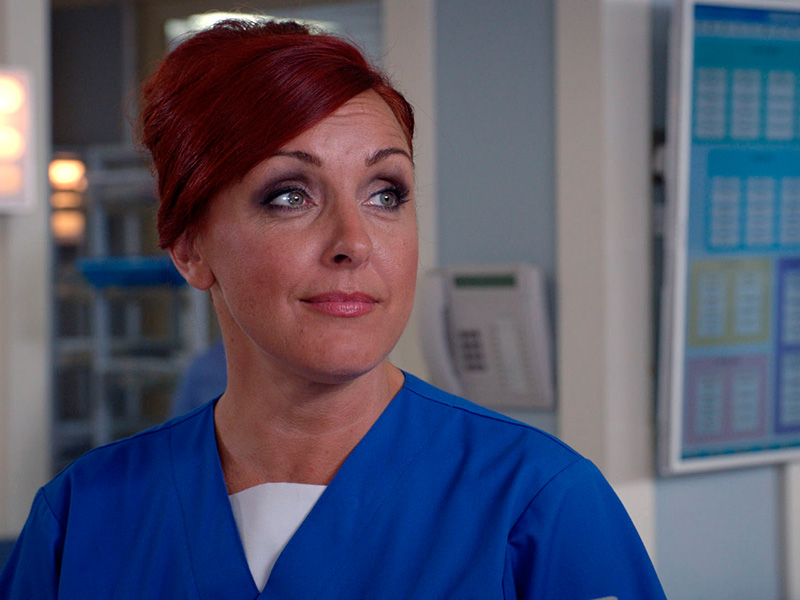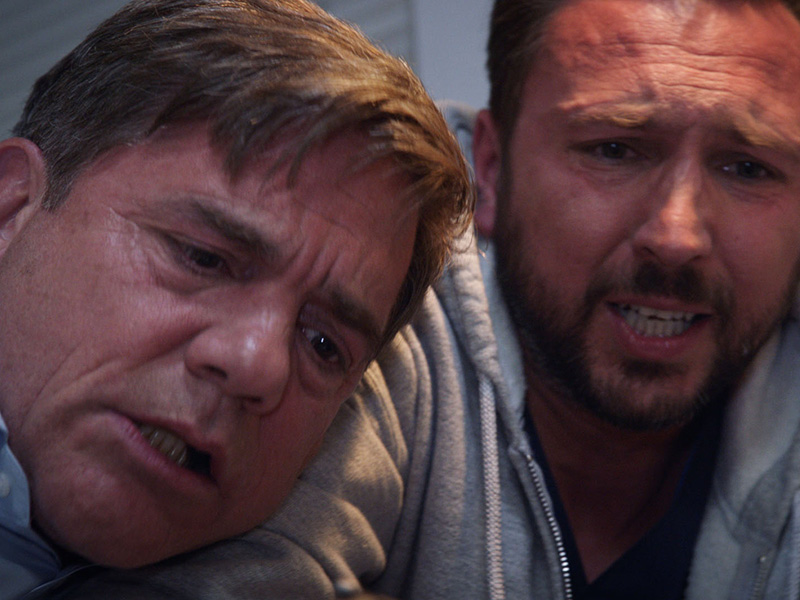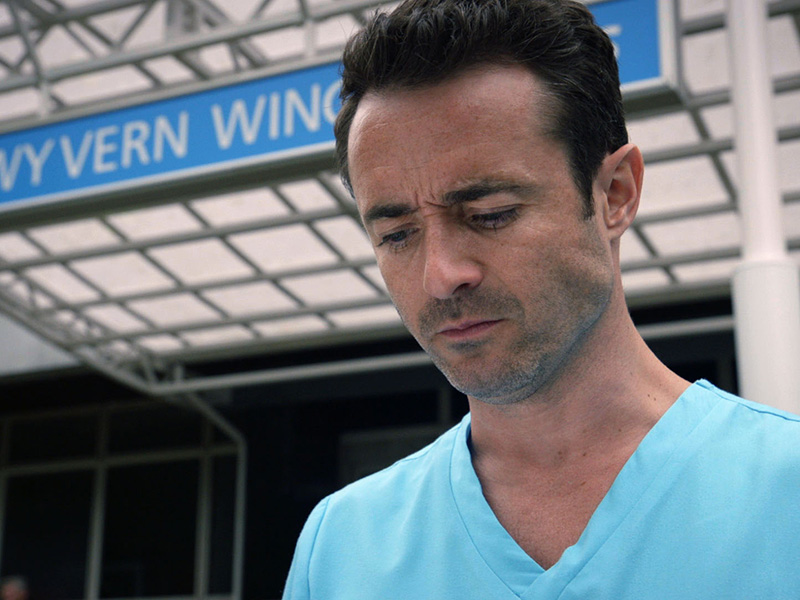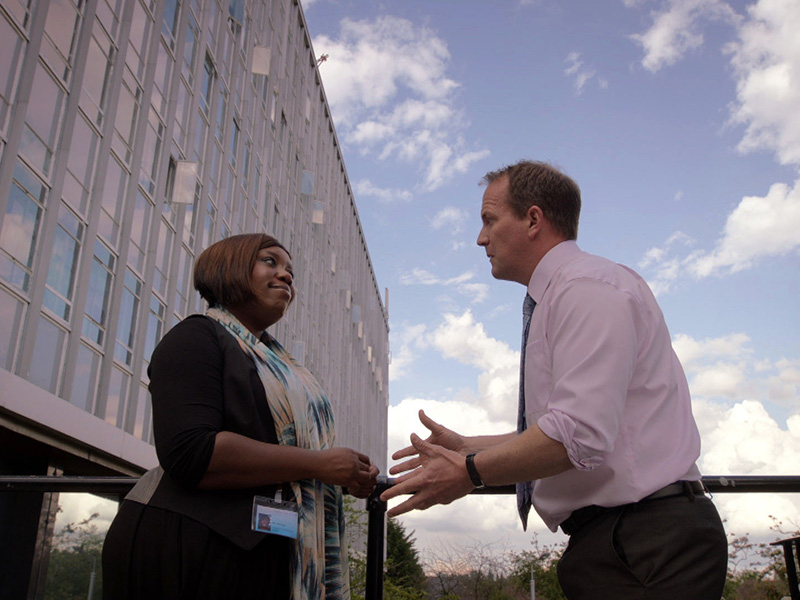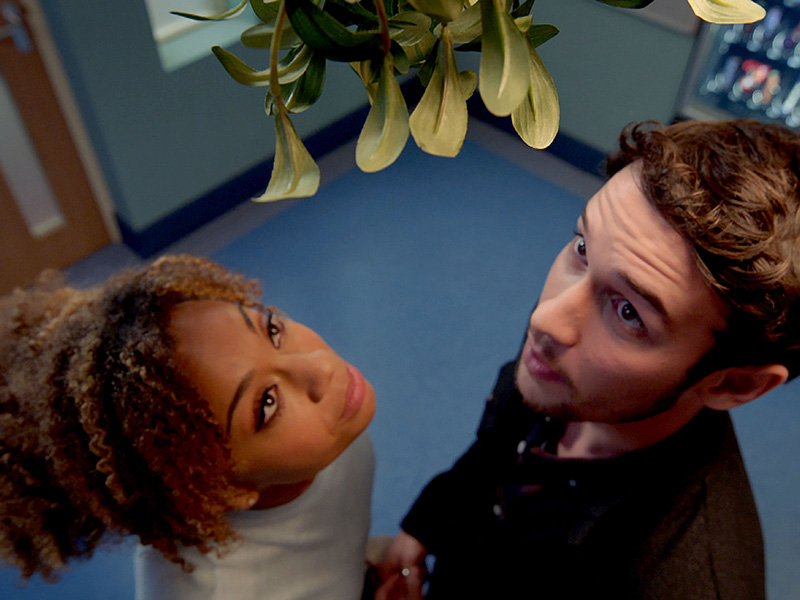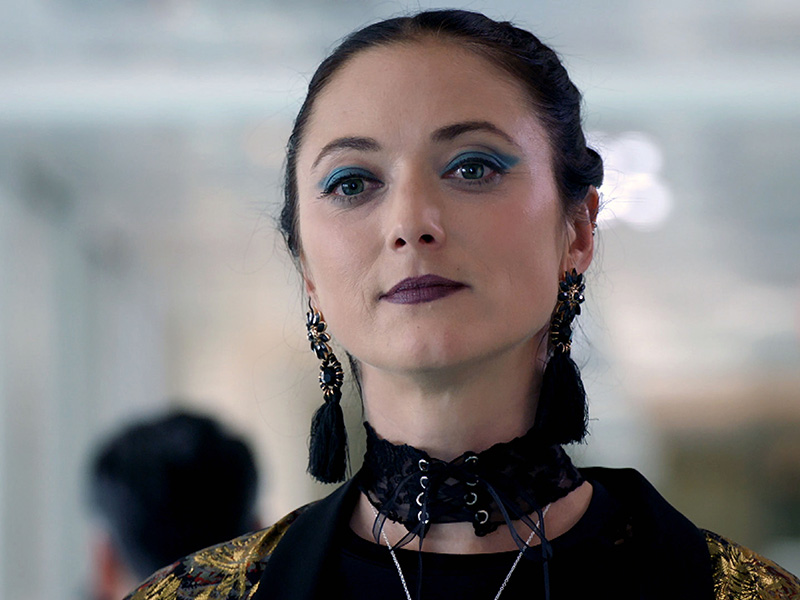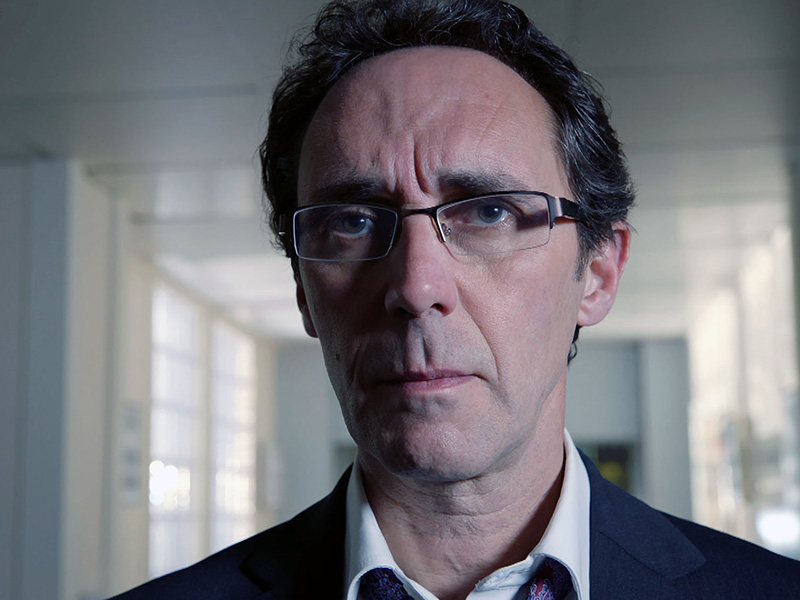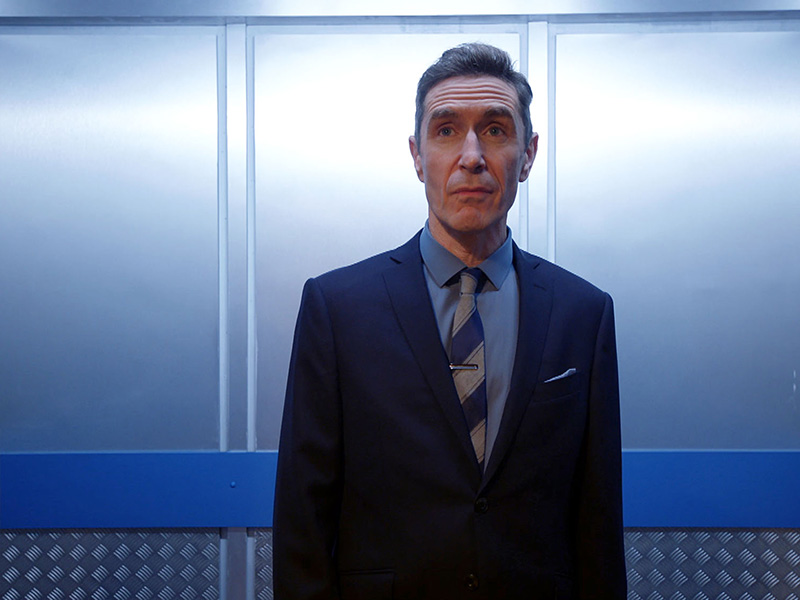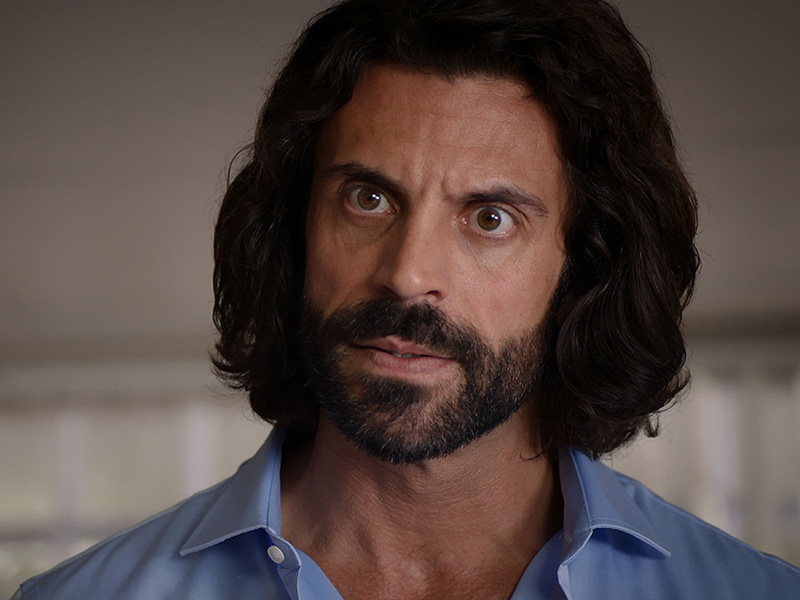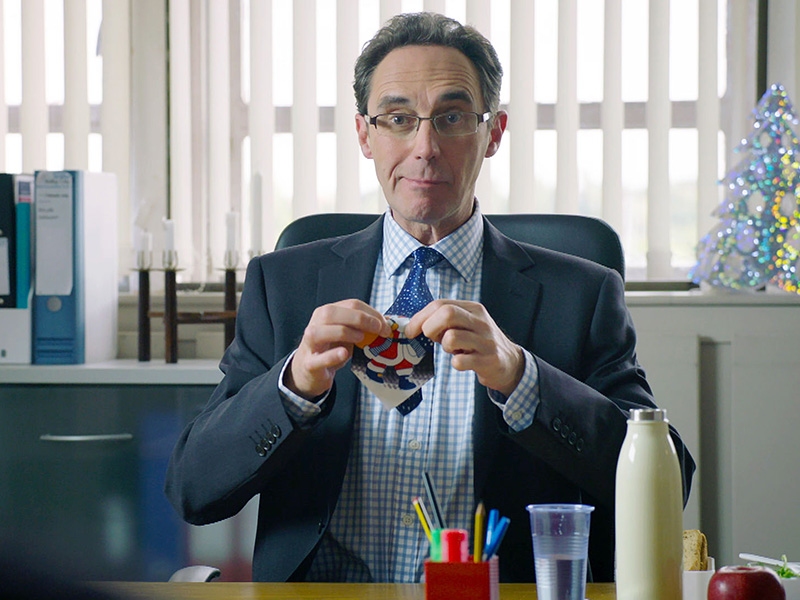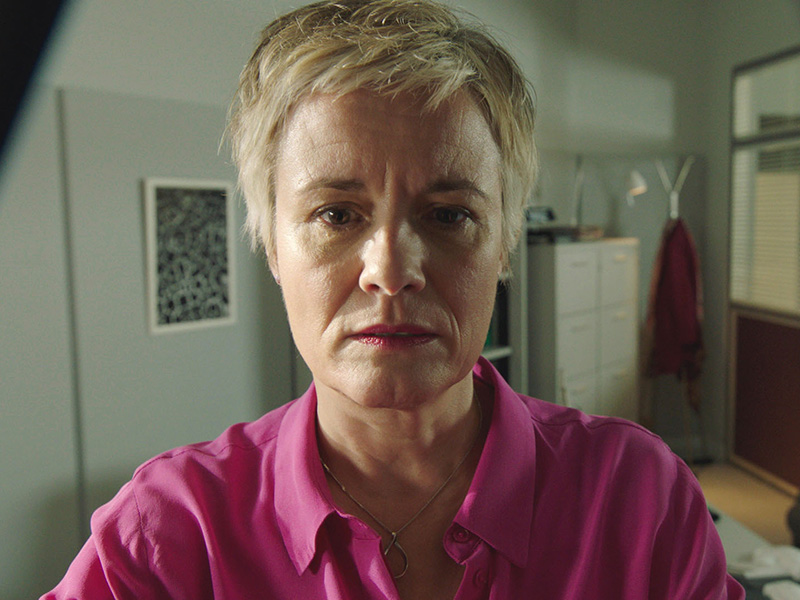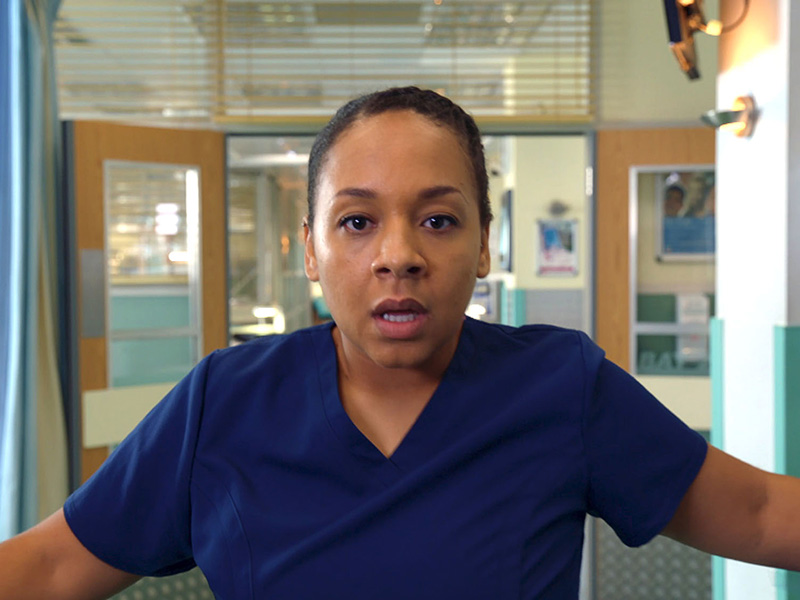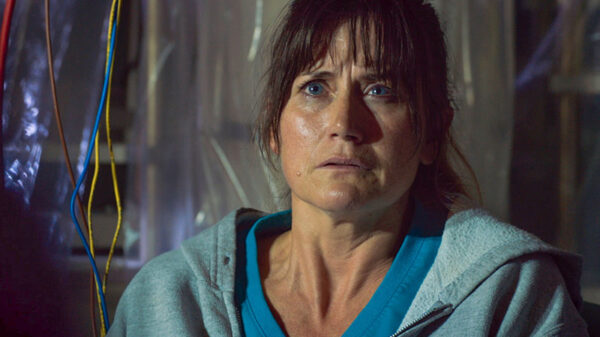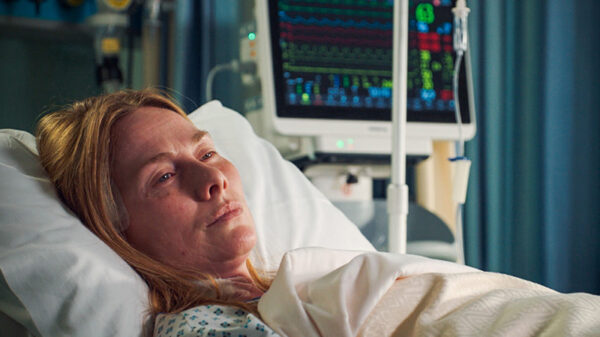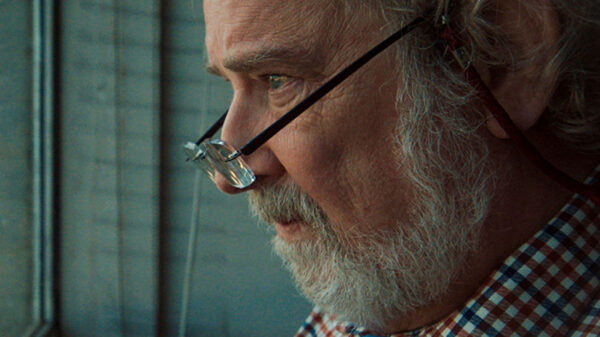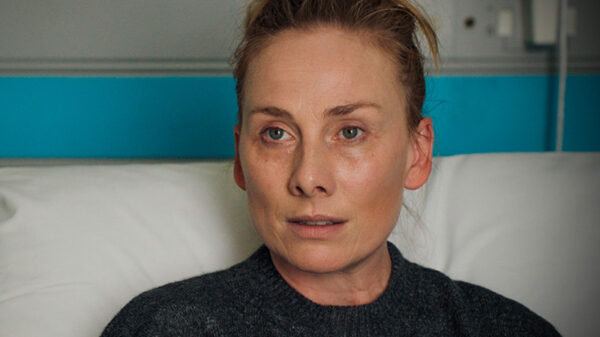Locations
At the start of Casualty, all the medical scenes were filmed on a Wednesday in the BBC’s Television Centre, the same day as Top Of The Pops. Advisor Pete Salt recalls leaving the studios in a cab and being besieged by hordes of screaming girls who had no idea who he was!
For the first two series, the hospital scenes were filmed in Television Centre and the set was torn down (“struck”) every night. For the last 23 years, the show has had a permanent home in a non-descript warehouse in Bristol. Its new Cardiff home will be Casualty’s first purpose-built, permanent set – it only took 25 years!
All the external locations have always been filmed in Bristol, often to the consternation of locals who, unaware of the filming, have been shocked by scenes of carnage and devastation.
The Casualty Warehouse in Bristol sports a tall net over its roof to prevent seagulls from alighting. The local gull population is high, and filming sometimes has to be stopped because of their piercing cries.
To create an aircraft crash aftermath, the crew built an embankment around a training aircraft at an airport that looked as if it had ploughed into the embankment.
All the fire appliances, ambulances, police, temporary shelters and casualties were put in place; but no one had warned incoming flights, which caused some concern amongst the holidaymakers!
What makes emergency services special: While filming on location, a car screeched to a halt in front of the props buyer and paramedic advisor Clive Haddrell. A distraught man ran up to them asking for help – his child was having difficulty breathing. Clive jumped in the car, took the child from the mother and told the chap to drive, he’d direct him to the local ED. Clive later returned and without missing a beat resumed his conversation with the props buyer. (The child recovered.)
Make-up
* The Make-Up department uses 15 types of blood, including for: eyes, dried, congealed, clotting, dark scabs, fresh scabs, edible.
* Burnt sugar is used to darken blood.
* Edible blood comes in any flavour you desire, including mint, chocolate chip and blueberry.
* The teams use an average of two pints of blood per episode. Over a series, that’s almost 100 pints.
* Vomit is made from varying combinations of rice pudding, apricots, cocoa powder, apple juice, fruit salad and packet soup. It comes in sweet and savoury.
* Blood spurts are done old school, often involving a make-up artist crouching under a hospital bed and pumping syringes or weed killer bottles.
* Tears are created using tear sticks.
* Pus is made from a combination of hair conditioner and yellow colouring, which reportedly has a lovely smell.
* Brain matter is created from cotton wool, gel and blood.
* Swelling is difficult to replicate on screen and make-up designers have been known to have a quiet word with medical advisors before the medical meeting, begging them to downplay how much swelling would be involved.
* Three Make-Up artists were stopped on their way back from Loughborough after filming a train crash scene, and police discovered 8 “bodies” and an assortment of severed limbs in the boot!
* Passers-by are so frequently fooled by Casualty’s fake injuries that artists must now have make-up removed before they leave set. When one actress was being driven back to the Warehouse still sporting horrible facial injuries, a man pulled up at the lights next to her. As soon as he saw her, his face fell and he carefully put on his seatbelt.
* The make-up and costume artists pride themselves on their work. A director once threw a tramp off set only to discover he was one of the cast!
Medical
Pete Salt was the original medical consultant on the show and the inspiration for Charlie Fairhead. Pete holds the unique honour of having read and advised on every script for the series.
In a suturing scene, medical consultant Pete Salt once had to stand in as Brenda Fricker’s hand double. The director realised Pete’s hands might give the game away, so they gave him surgical gloves. They then realised his arms, with darker hair than Brenda’s, were still in shot, so they gave him longer gloves. They then realised her belt buckle had been reflecting in the wide shot, so Pete had to wear the belt. And then they realised her dress was also in shot…so Pete had to don her dress as well!
Rather like the murder count in Morse’s Oxford, Casualty features far more mass casualty incidents (MCIs) than real life. Most emergency doctors will deal with one or two in their entire career – Casualty’s medics deal with one or two a series!
New cast must be trained to do basic medical procedures, such as suturing, holding and manipulating instruments, how to put a stethoscope in their ears and not to squeeze needles so they shoot drugs into the air. One of advisor Pete Salt’s best pupils was Jonathan Kerrigan (Sam Colloby).
Casualty has always been at the forefront of medicine, showing not just changes in tools and uniforms but all the NHS reviews, re-alignments and policy changes over the decades. It is the only record of its kind of the NHS’s development. Whereas originally the show was politically controversial, the NHS and research groups are now interested in studying it!
The original opening and closing credits are a continuous shot of medics taking a patient from an ambulance through the emergency department to resus. They were filmed at Bristol Royal Infirmary and featured medical advisors Pete Salt (nurse) and Clive Haddrell (paramedic), who are still with the show today.
One scene involved hooking a patient up to a pacing machine. Unbeknownst to the crew, the machine hadn’t been fully disabled and the actor was receiving small shocks throughout filming. (He didn’t suffer any ill-effects.)
The medical meetings which are a staple of the pre-production process are now lengthy and involve over a dozen production people. All the medical advisors talk the various crew through the episode’s procedures. When these meetings started, the brainchild of consultant Pete Salt and researcher Oliver Kent, they comprised six people and were held at Pete’s house!
See also: 25th Anniversary : Awards to Episodes : Guest Artists : Props to Writers
(Source: BBC Press Office)




